In the blog post Chaos-based encryption I introduced
a chaotic cryptology algorithm
using a Poincaré successor ordinal
function. In this article I want to present you a command line suite providing this very
Chaos-based encryption functionality alongside some extensions
as well as comparison to the AES algorithm.
This chaos-based cryptography suite is intended for educational purposes only:
As I am not a mathematician, I neither can guarantee the algorithm nor the program
code implementing the algorithm to be water proof or free of bugs! Any usage
is intended for educational purposes only and any other usage is at your own risk.
The show case
To evaluate the Chaos-based encryption command line
suite I prepared some sample images A, B,
C and D being similar to each
other but different in some obvious details (except the last image being a photograph).
Having those similar but differing images we can analyze the images (after being
encrypted with a given algorithm) by comparing them with each other (samples)
to get an idea on the effectiveness of the according algorithm.
Given similar but differing images we can analyze the accordingly encrypted images
by visual comparison to get an impression of the effectiveness of the according
algorithm.
As I already mentioned I am not a mathematician, hence I need some way to estimate
the randomness and effectiveness of this command line suite by digging neither too
deep into cryptography mathematics nor into abstract algebra. For a start I therefore
decided to do some (non comprehensive) visual analysis (samples).
The setup
Given images A, B, C
and D, I use a toolchain to extract the raw pixel data
of each image, encrypt the raw pixel data with a given algorithm and convert the
result back (interpreted as raw pixel data) into an image of the same dimensions.
In fact I used the PNG
file format though the file format actually does not play a role. I could have
chosen any other file format (supporting the required lossless compression
and color depth ) and the visual result would have been the same as the analysis
focuses on the raw pixel data (using PICDAT)
and not on the physical image file as a whole (with its file header, compression
method and so on).
The toolchain for the various steps during analysis consist of these four tools
(the first two being available in the downloads section of this site:
PICDAT: Extracts raw pixel data from an image and the other way roundCHAOS: Encrypts and decrypts data based on Chaos-based encryptionOPENSSL: Encrypts and decrypts data based (amongst others) on the AES algorithmENT: Pseudorandom number sequence test for calculating the entropy on a stream of bytesCOMPARE: Mathematically and visually annotate the difference between an image and its reconstruction
The tool PICDAT I dedicatedly developed
to accomplish visually analysing of (amongst others) Chaos-based encryption.
Please see the sources for the
actual compare-.sh as well as validate-.sh scripts automating the visual
analysis as described below! The DADUM tool is similar in that
I have developed it for creating loads of data to test your algorithms (though
it was not needed in this setup).
Overview
First of all, the raw image data of the sample images A,
B, C and D
is extracted using PICDAT. Then the raw
image data of each image is being encrypted with various flavors of the AES and
the CHAOS algorithms respectively (see below), using openssl
for the AES-* variants and CHAOS for
the CHAOS-* variants.
| |
A |
B |
C |
D |
| Original |
 |
 |
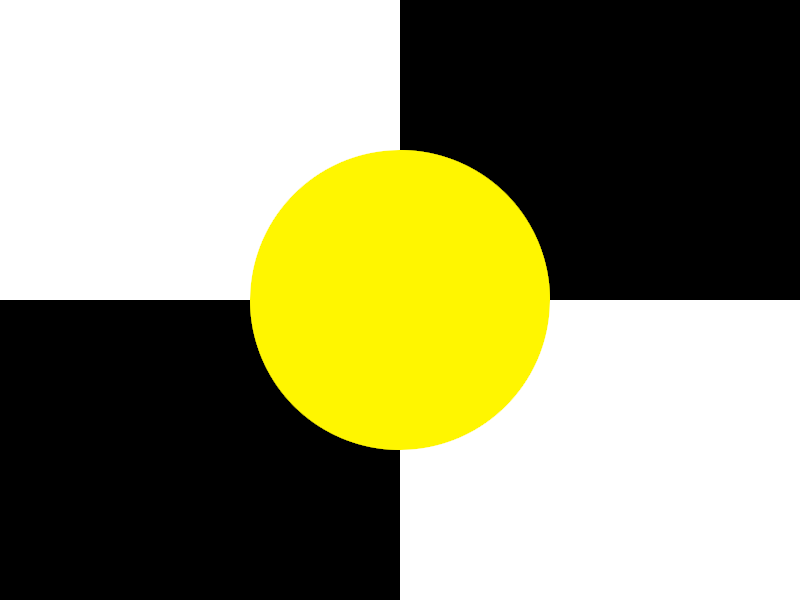 |
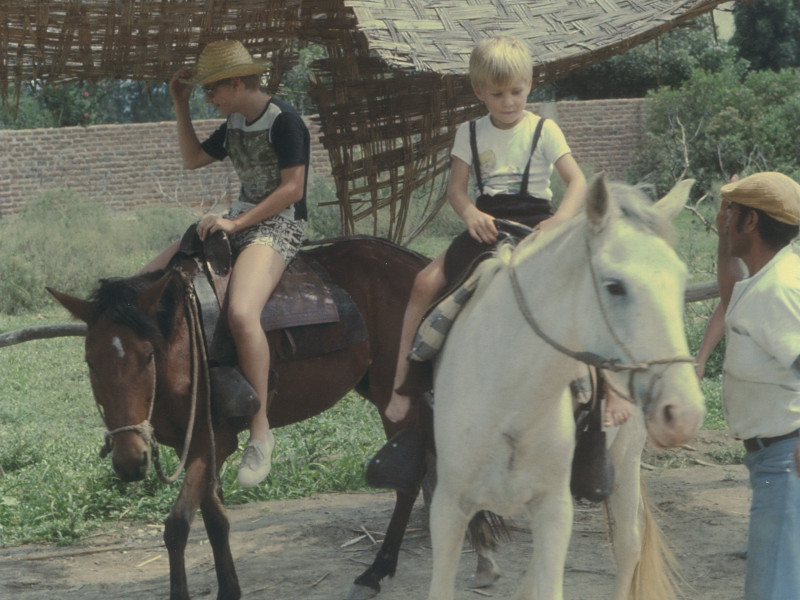 |
| AES-256-ECB |
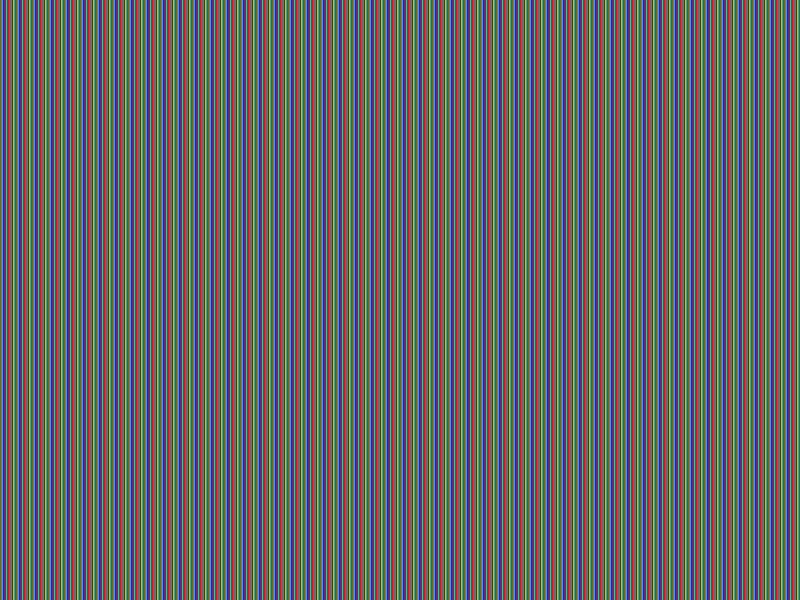 |
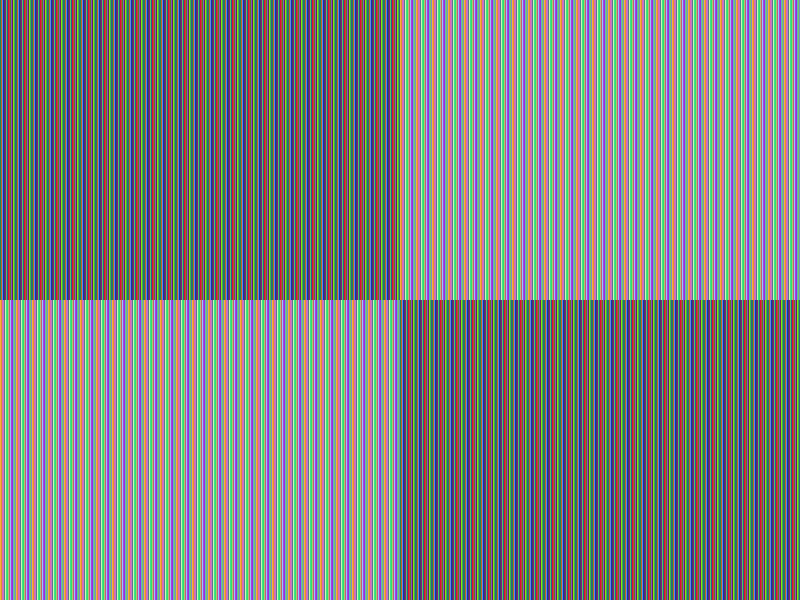 |
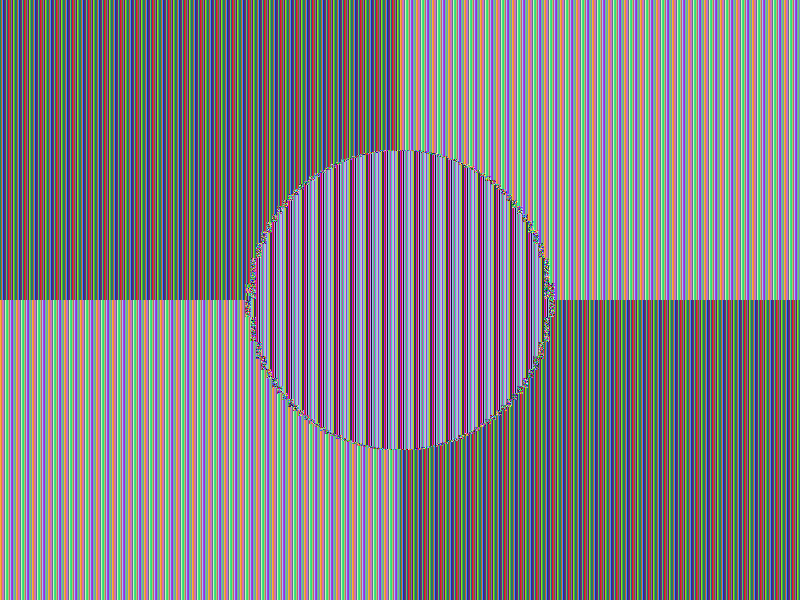 |
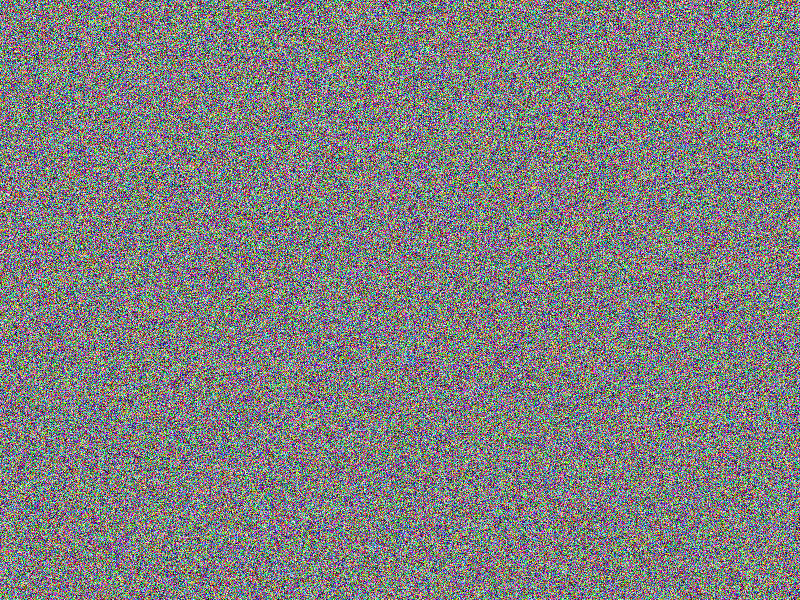 |
| AES-256-ECB-SALTED |
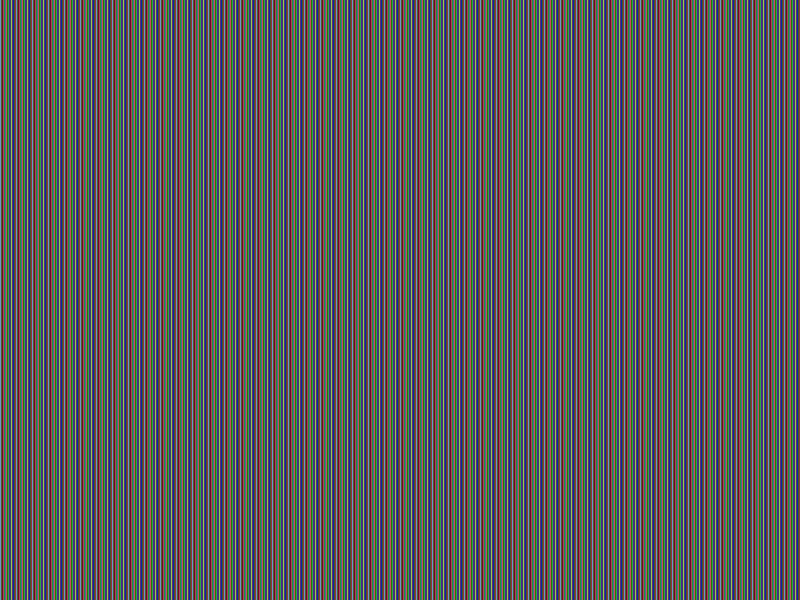 |
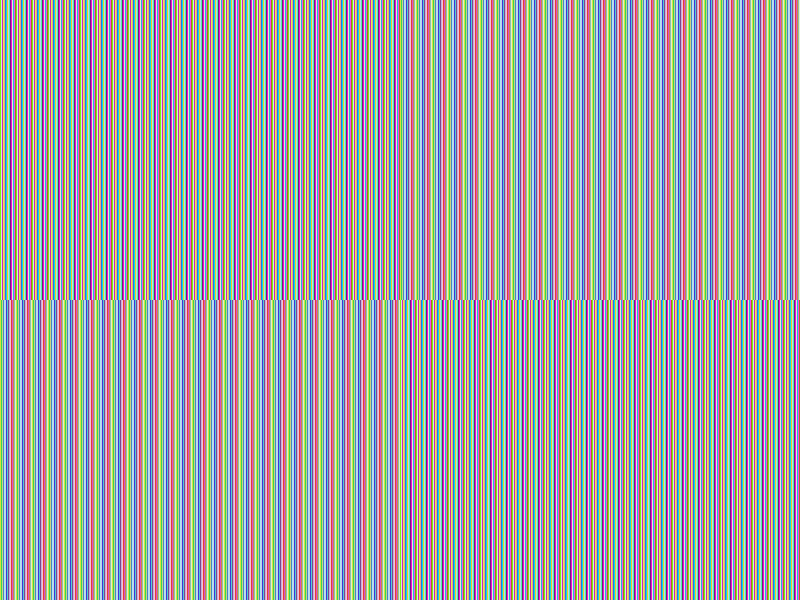 |
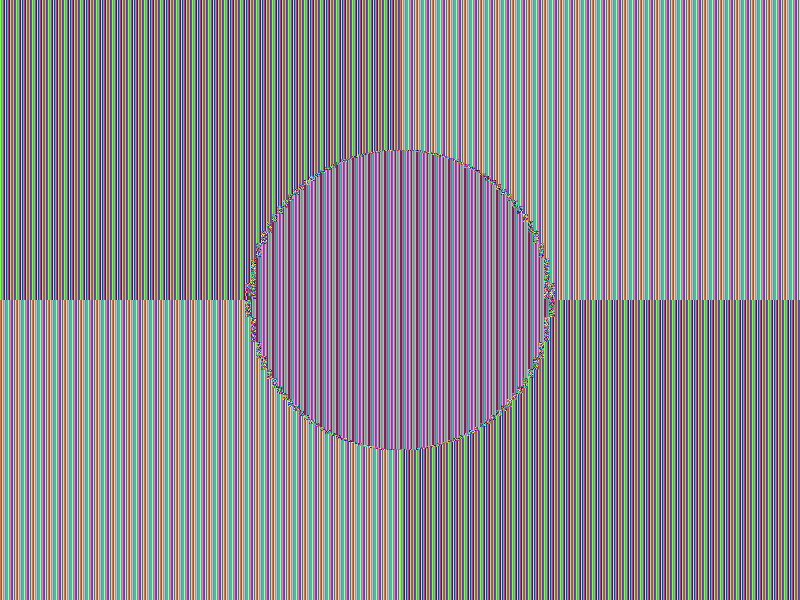 |
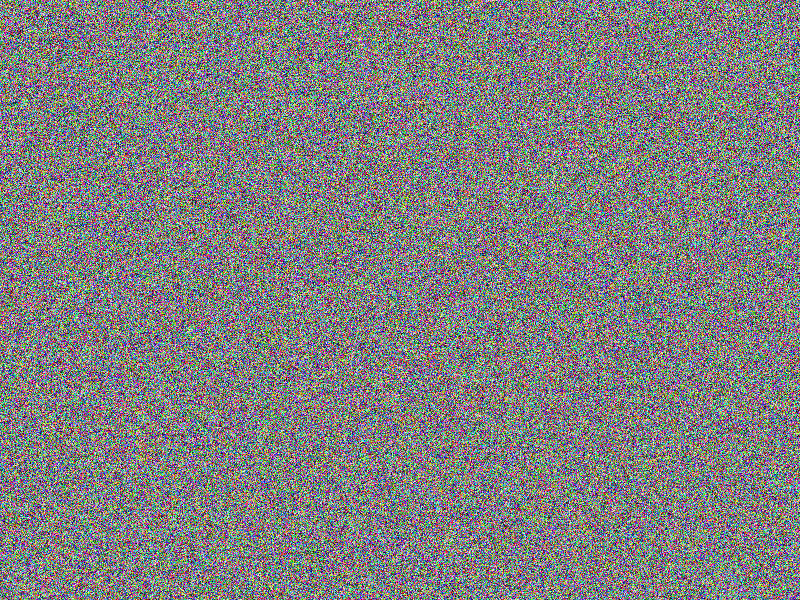 |
| AES-256-CBC |
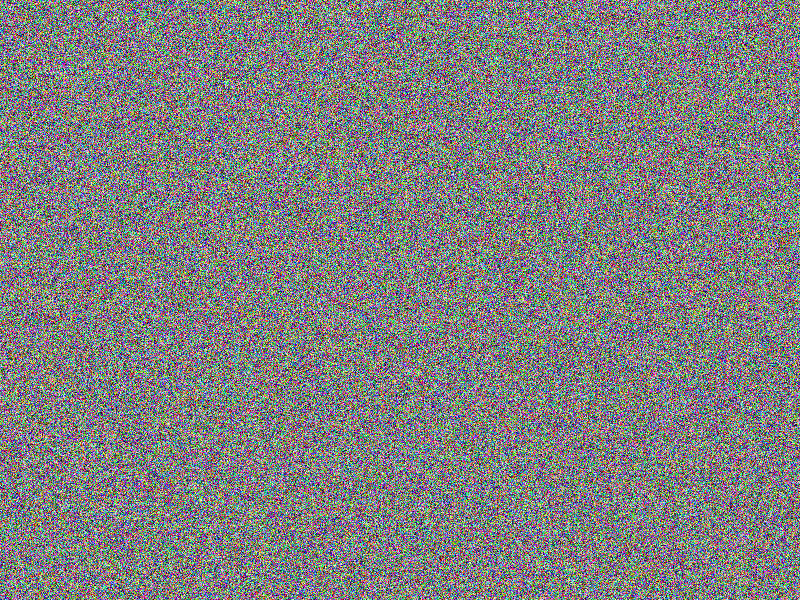 |
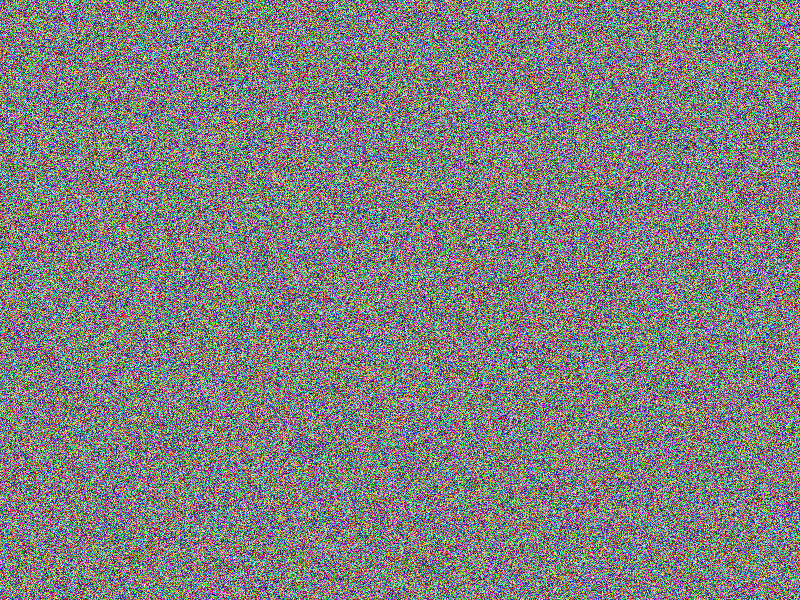 |
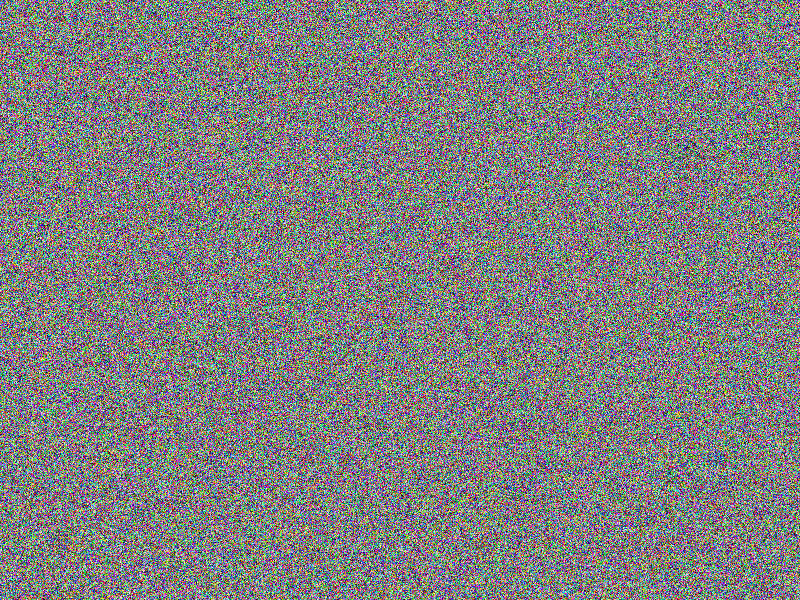 |
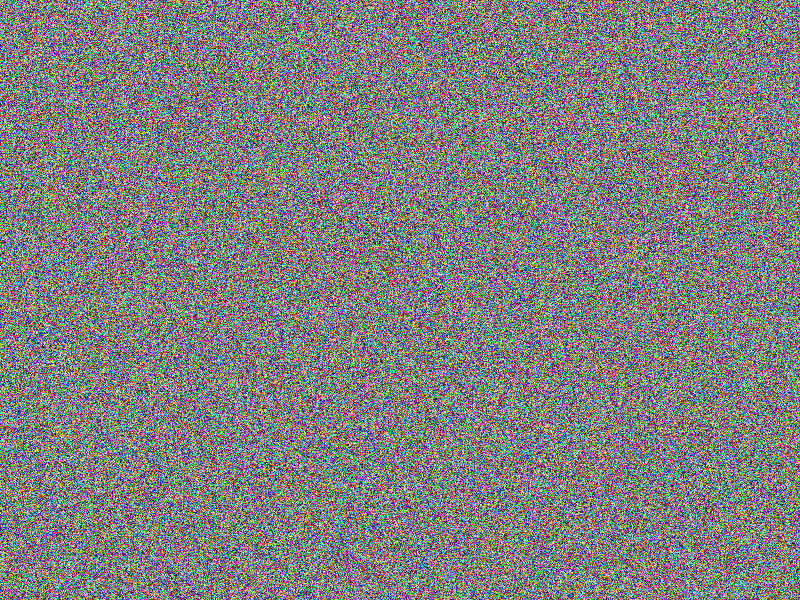 |
| AES-256-CBC-SALTED |
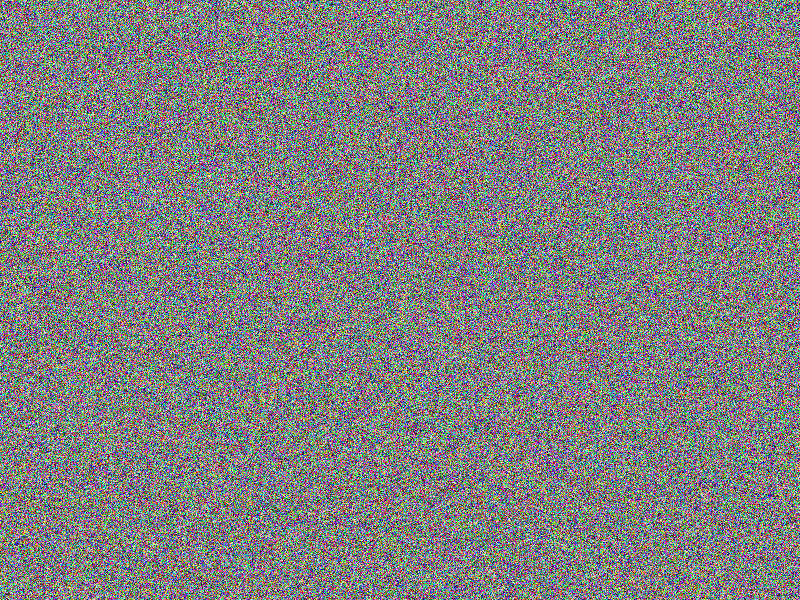 |
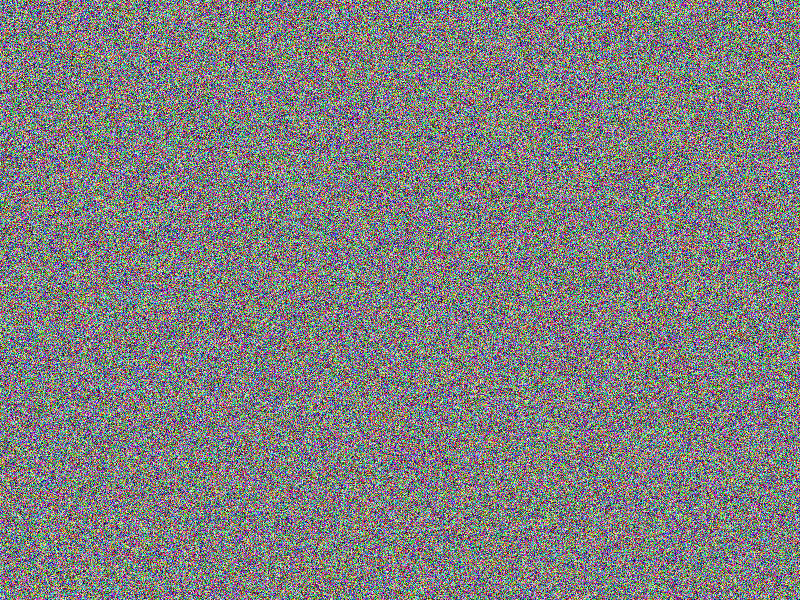 |
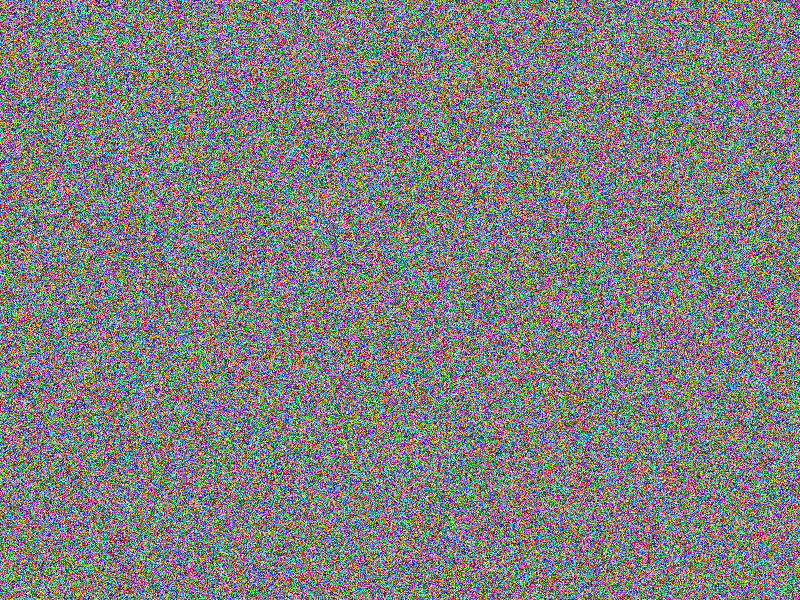 |
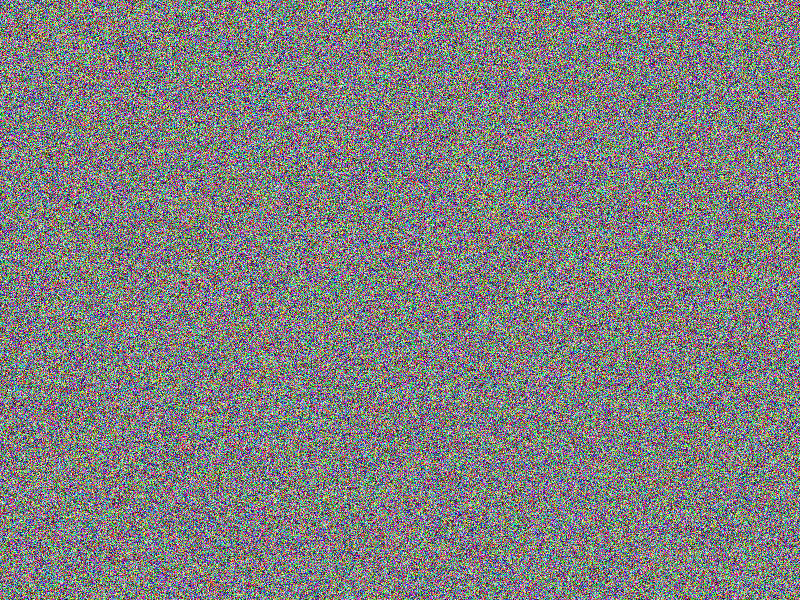 |
| CHAOS-NONE |
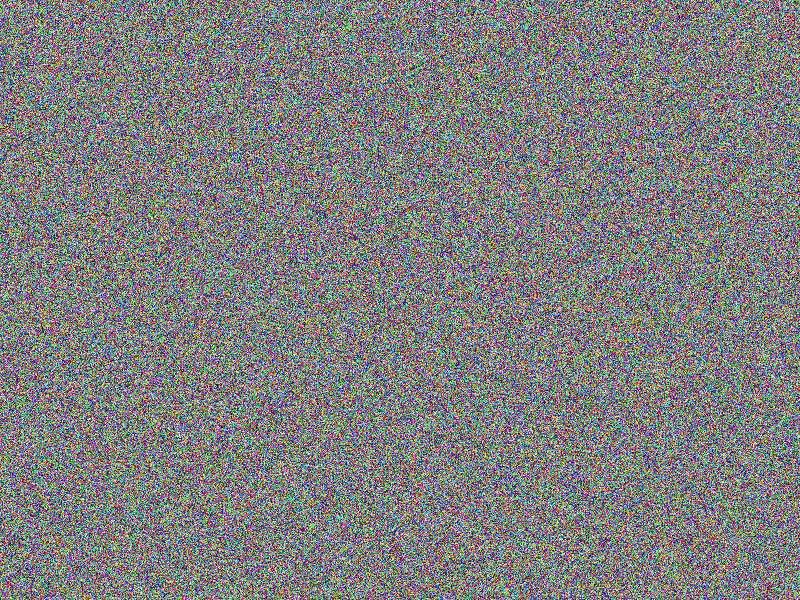 |
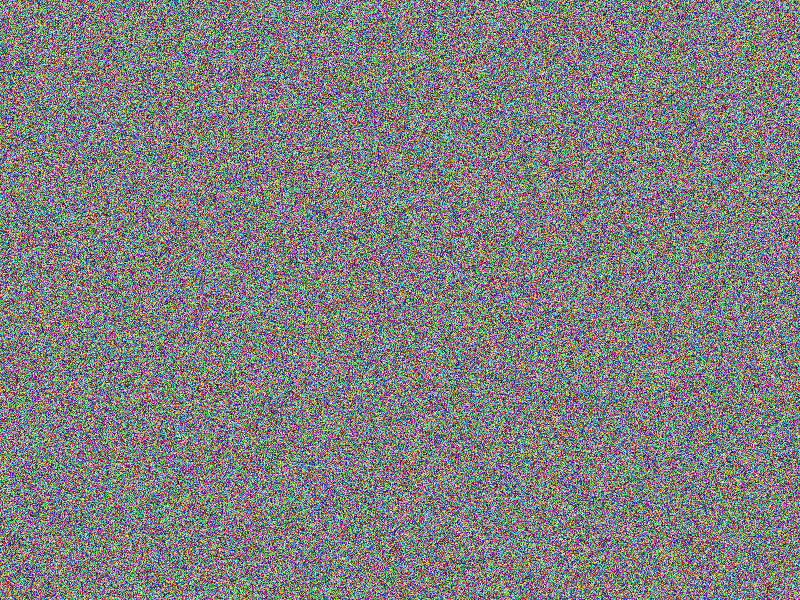 |
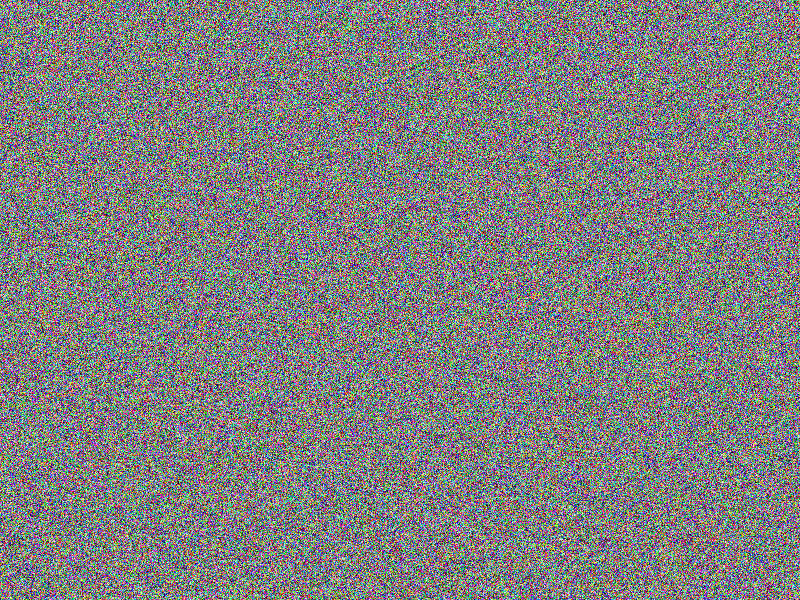 |
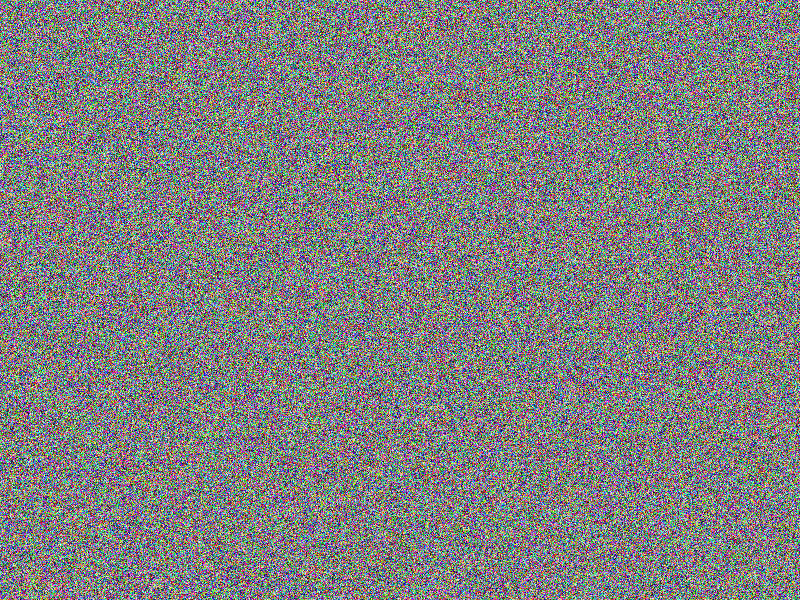 |
| CHAOS-XOR |
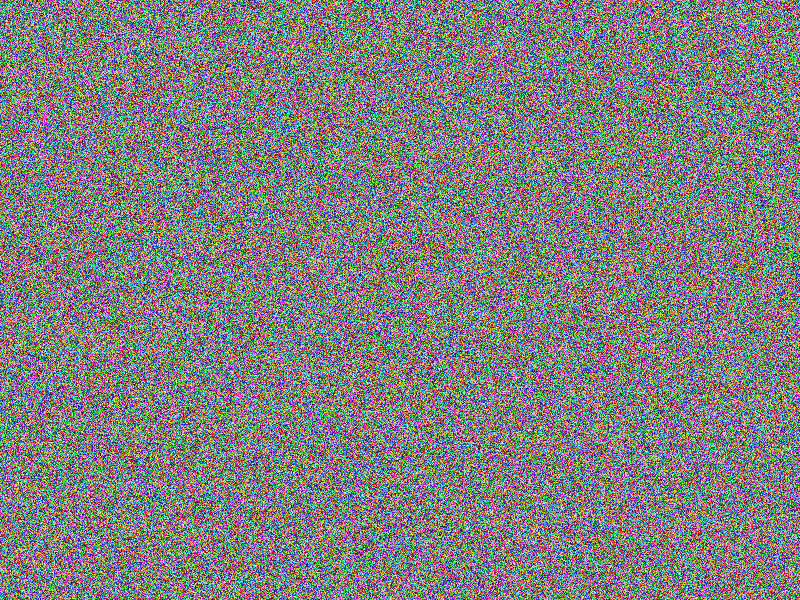 |
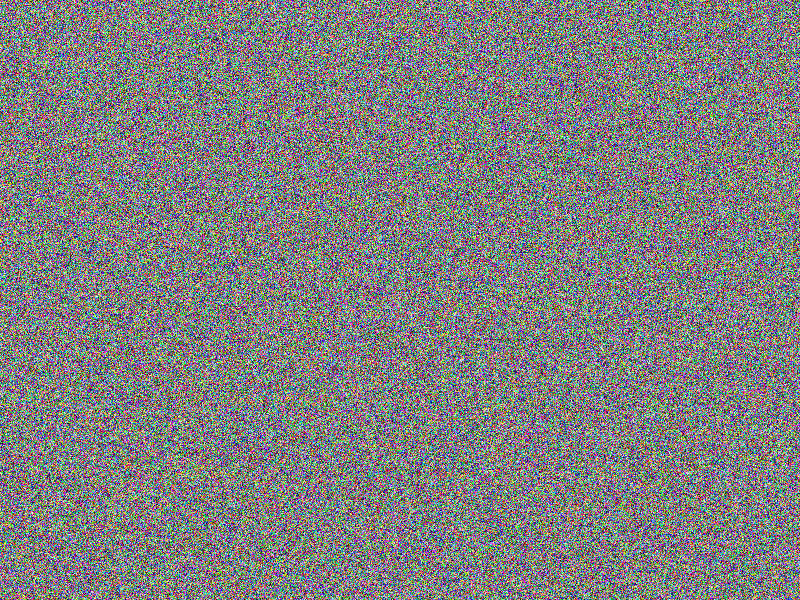 |
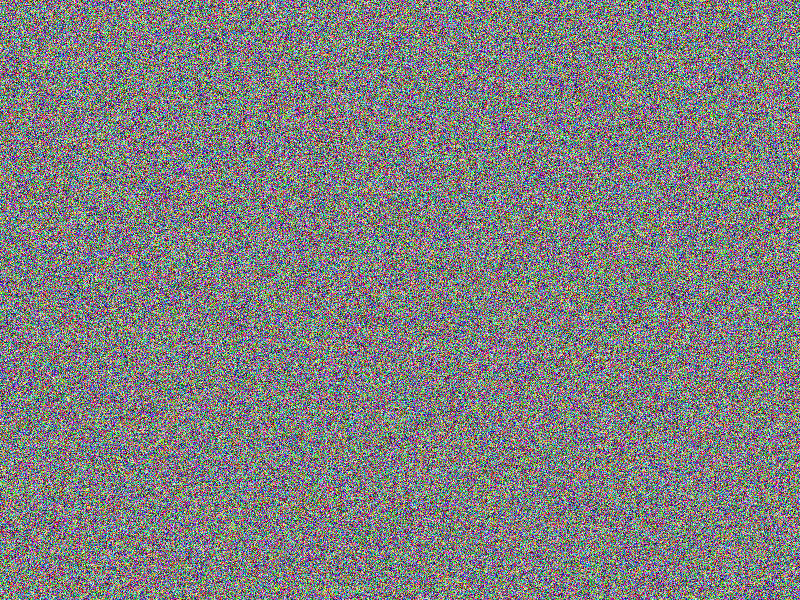 |
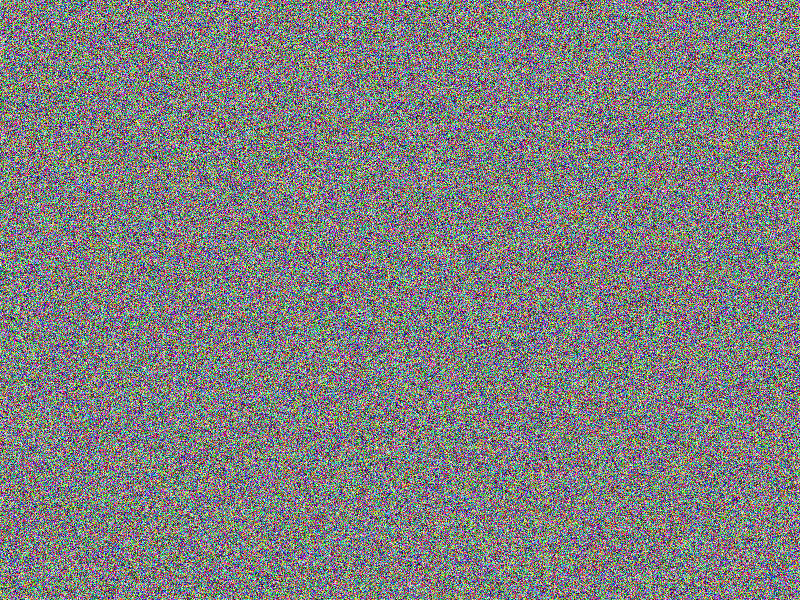 |
| CHAOS-MUTATE |
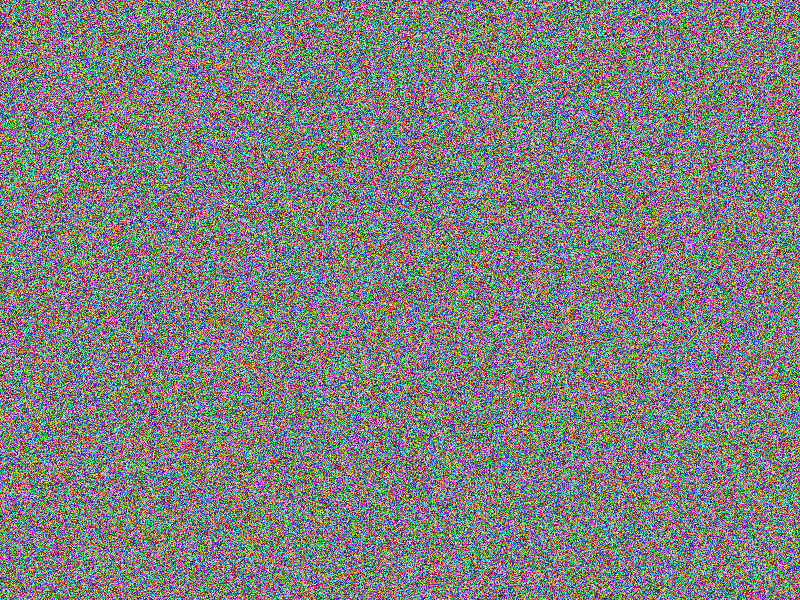 |
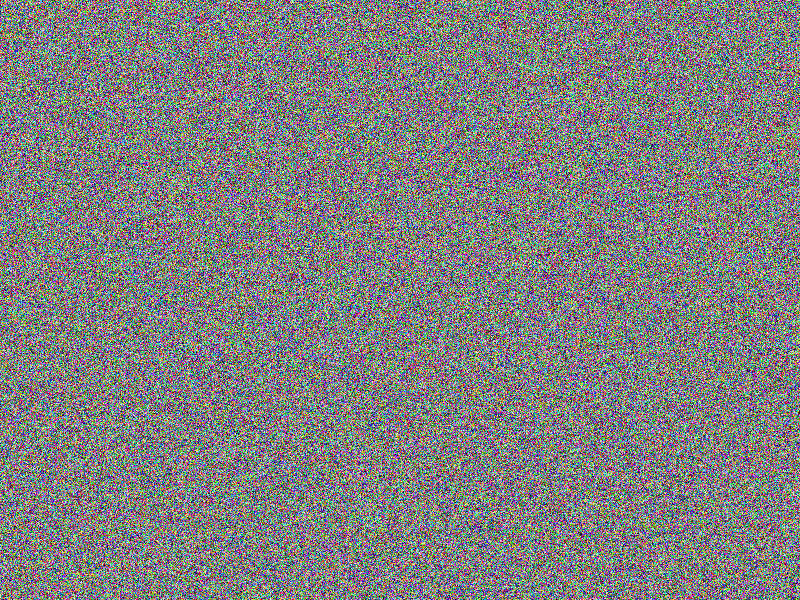 |
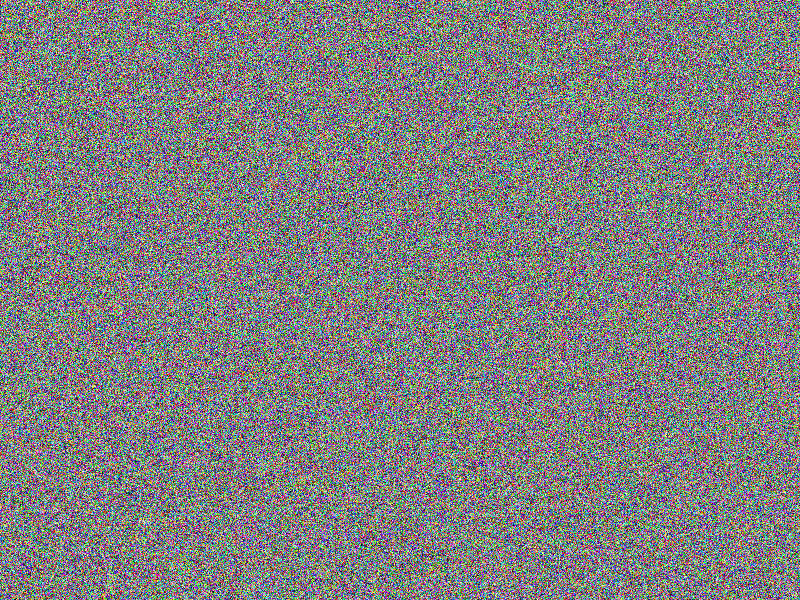 |
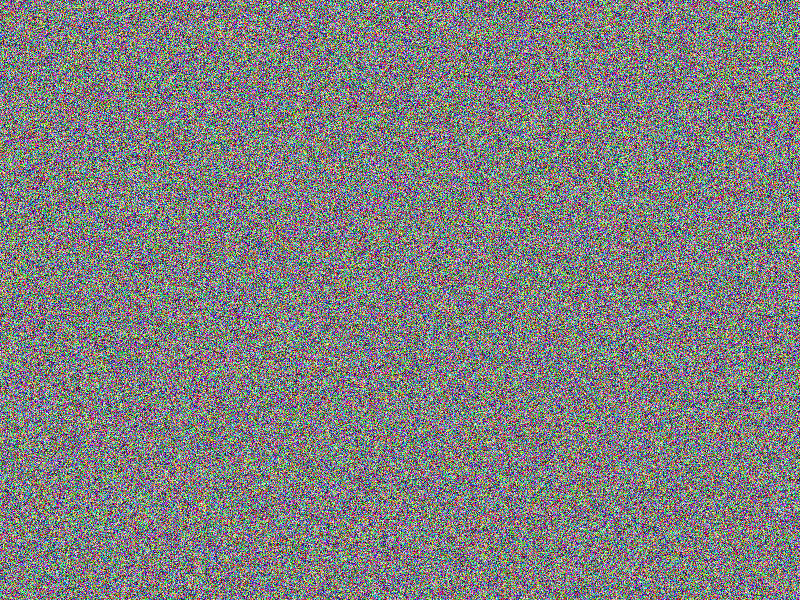 |
| CHAOS-PREFIX32 |
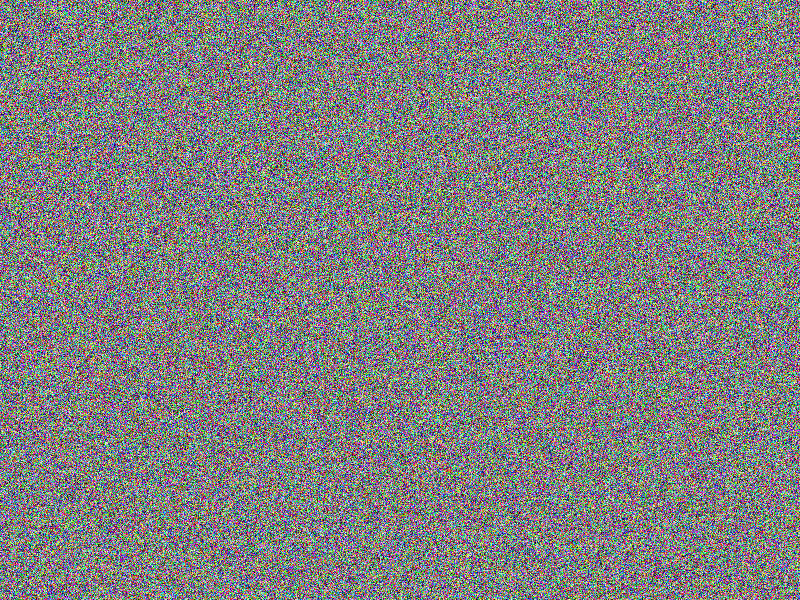 |
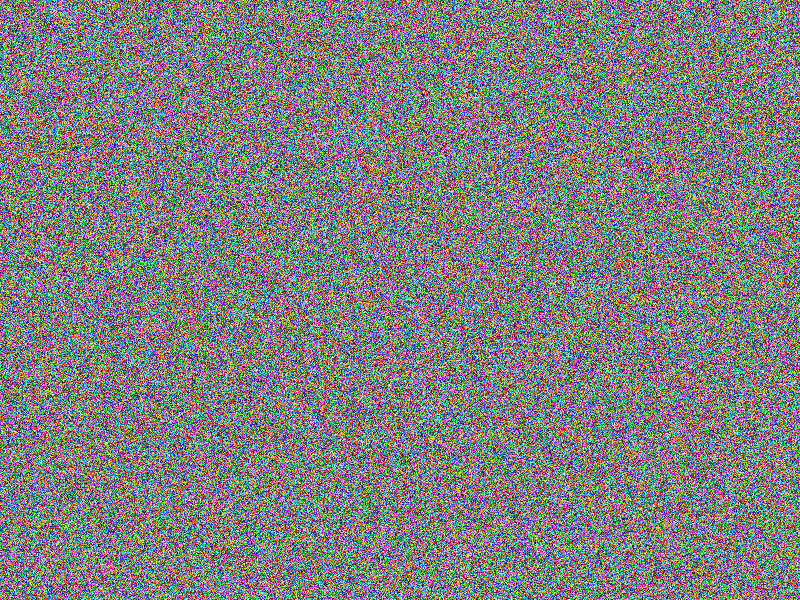 |
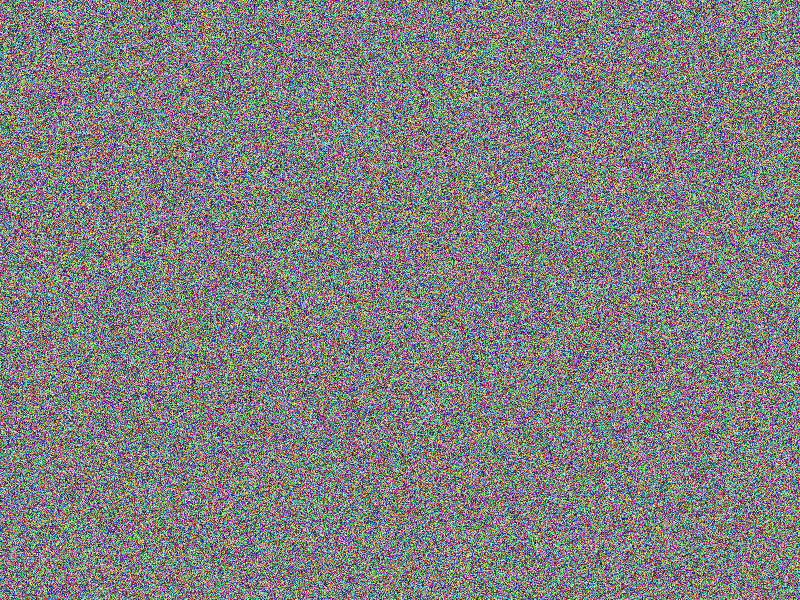 |
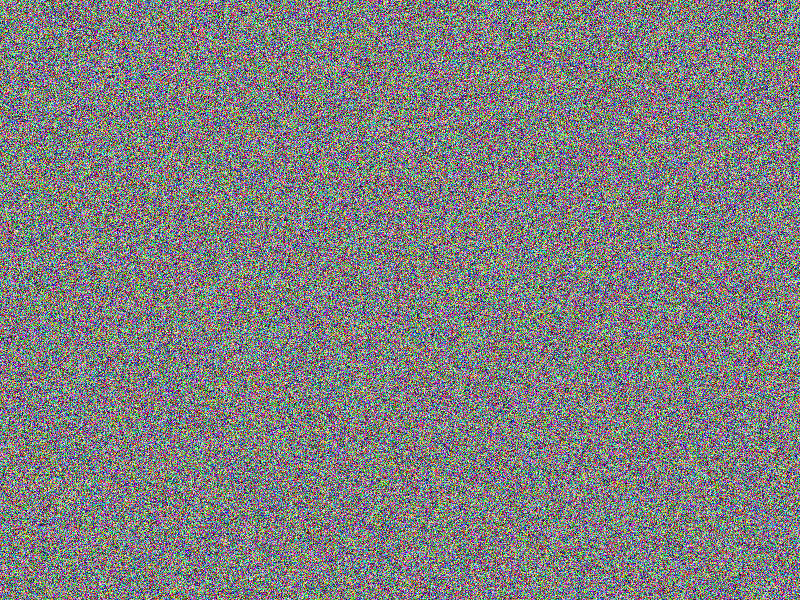 |
| CHAOS-M.-XOR |
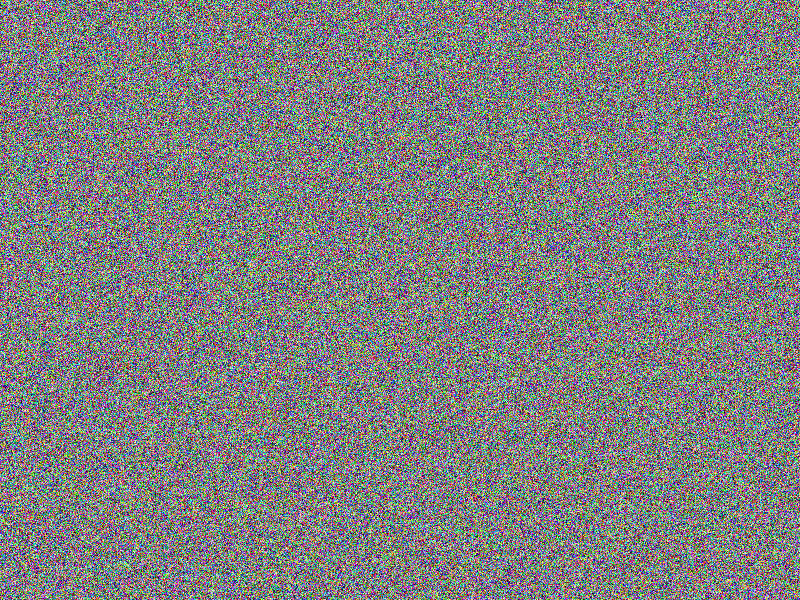 |
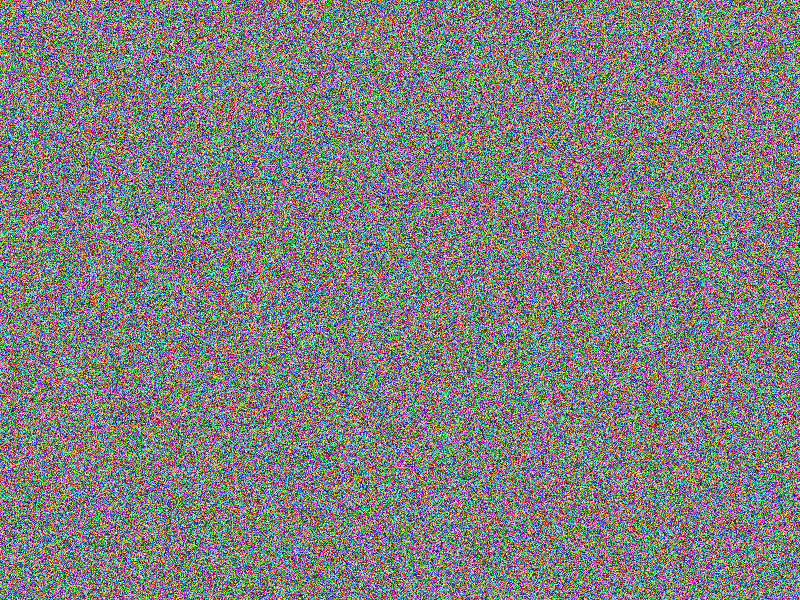 |
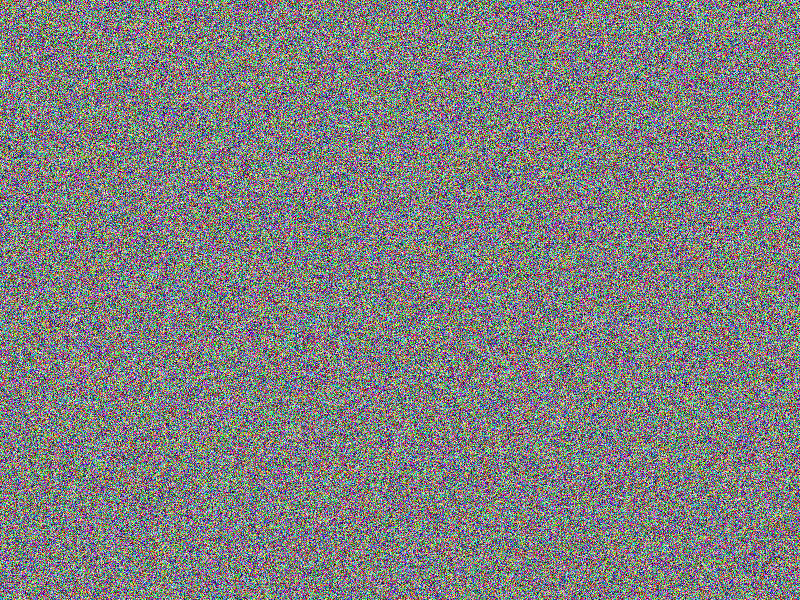 |
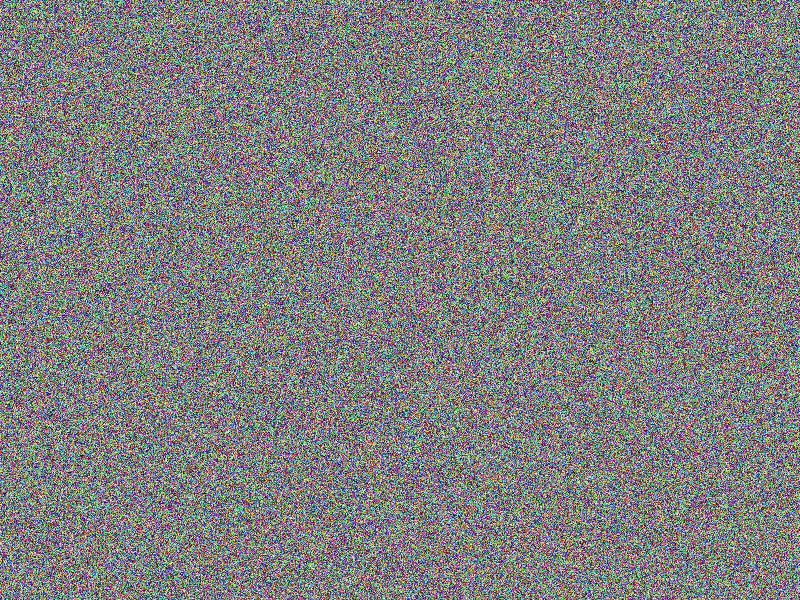 |
| CHAOS-M.-P.32 |
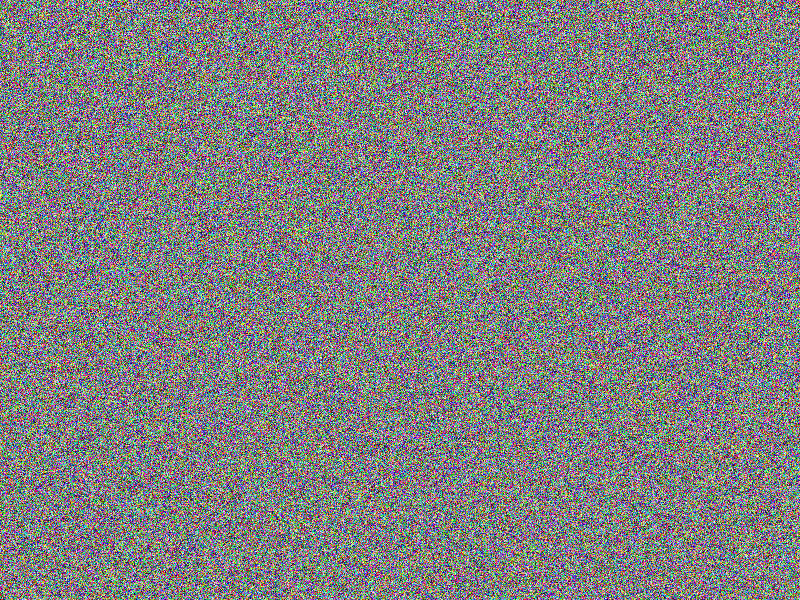 |
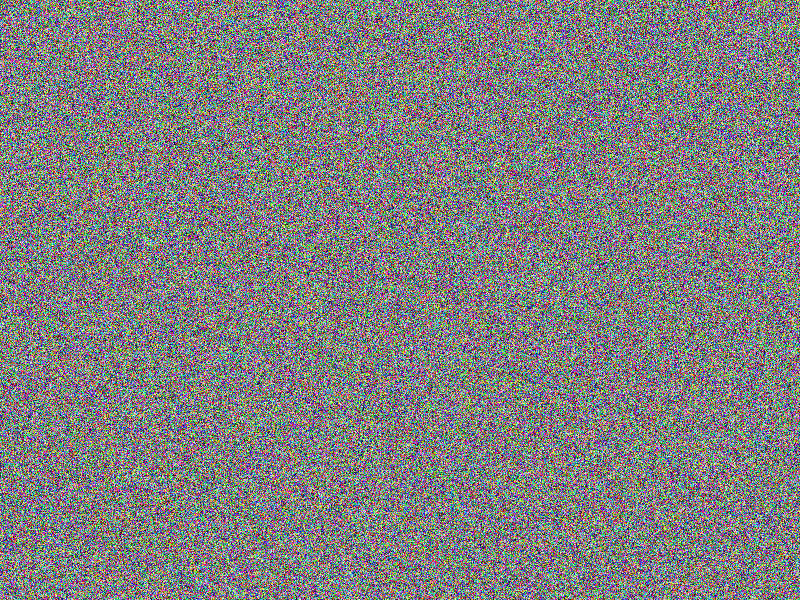 |
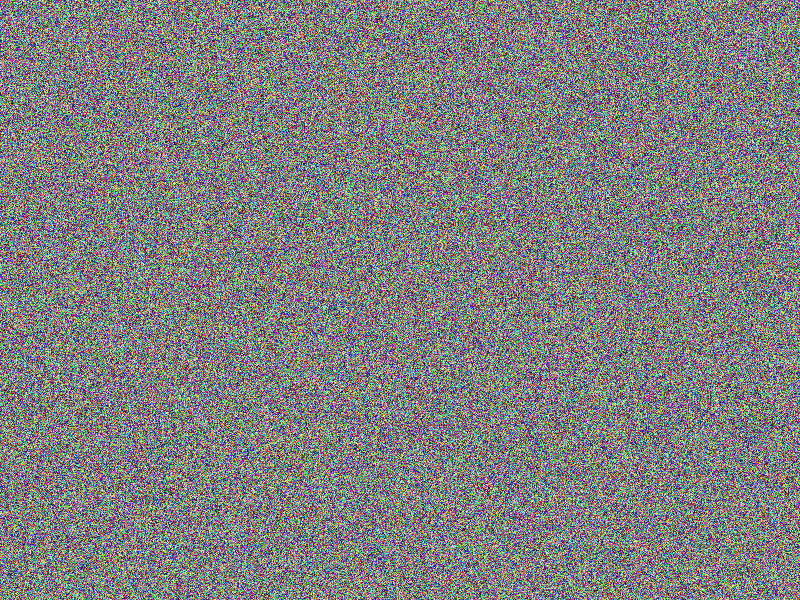 |
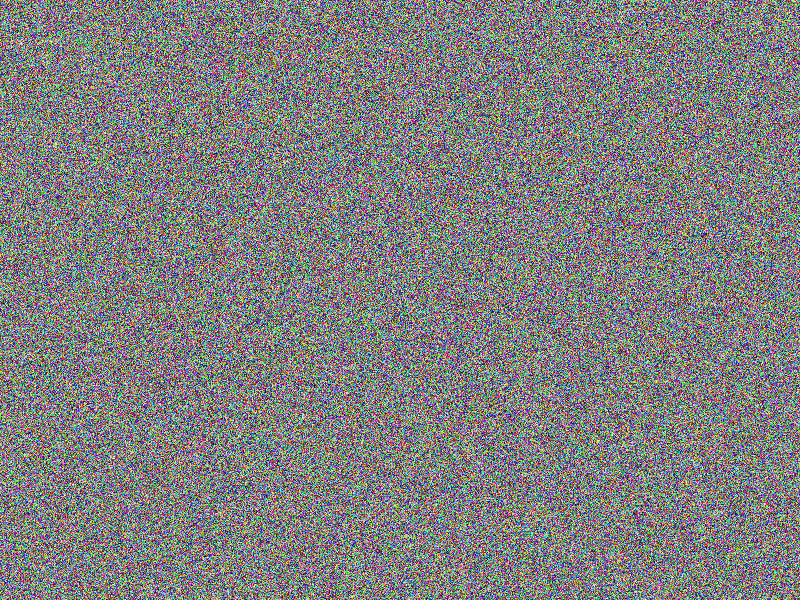 |
| CHAOS-M.-XOR-P.32 |
 |
 |
 |
 |
| CHAOS-SALTED |
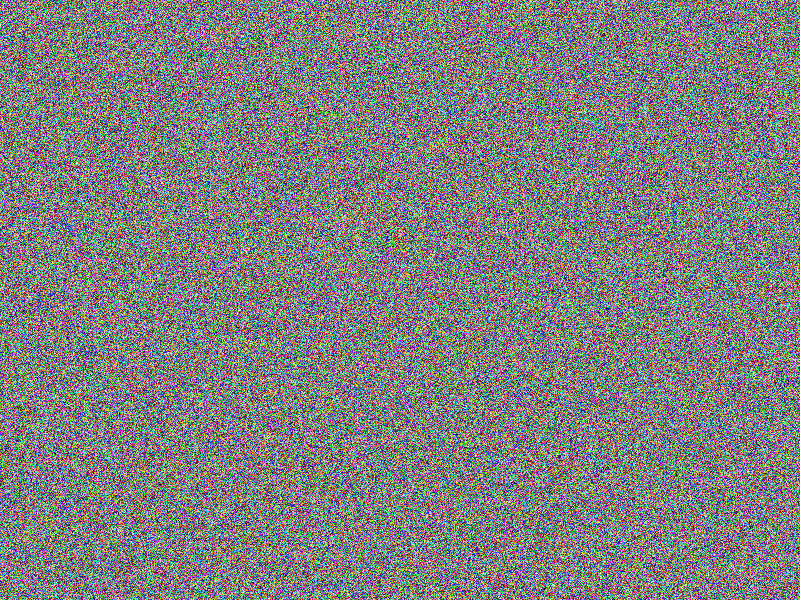 |
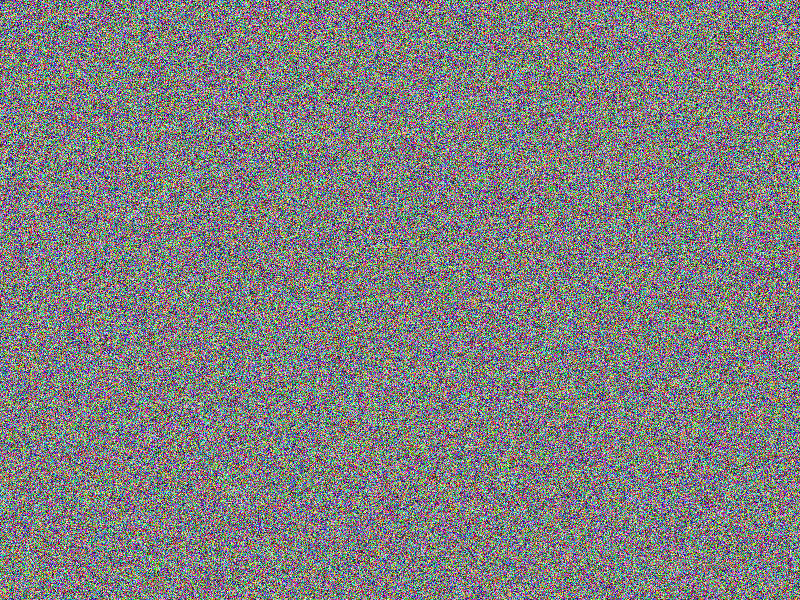 |
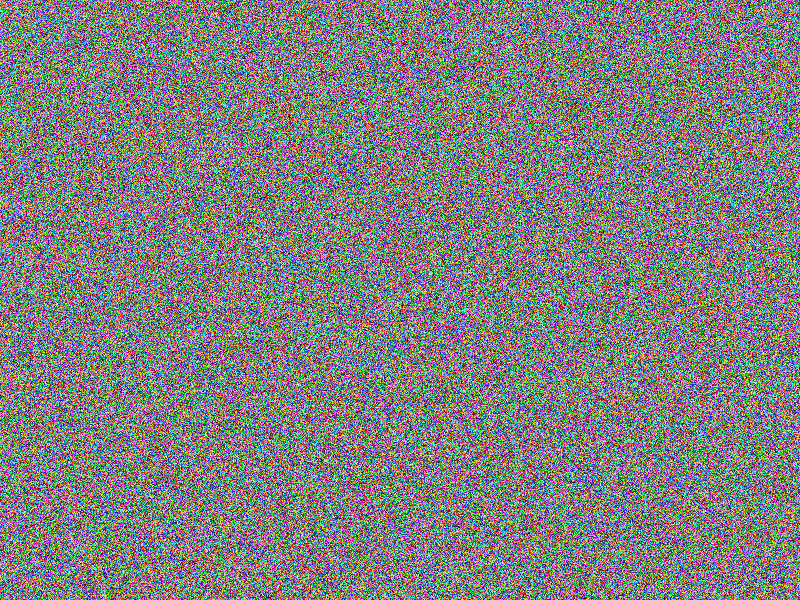 |
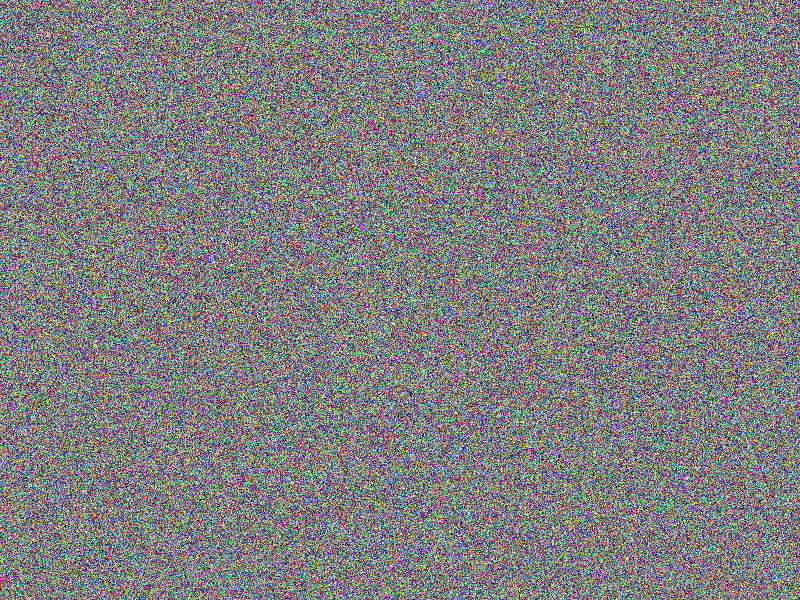 |
| CHAOS-CERT |
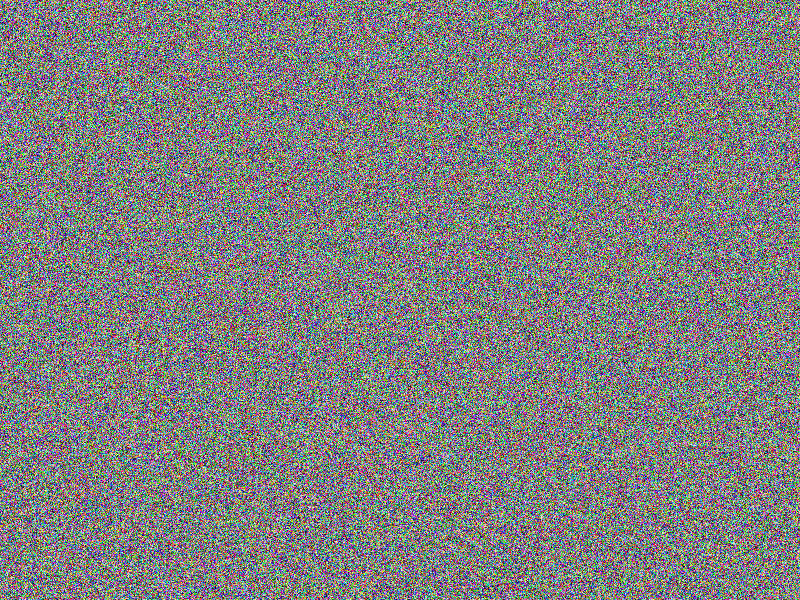 |
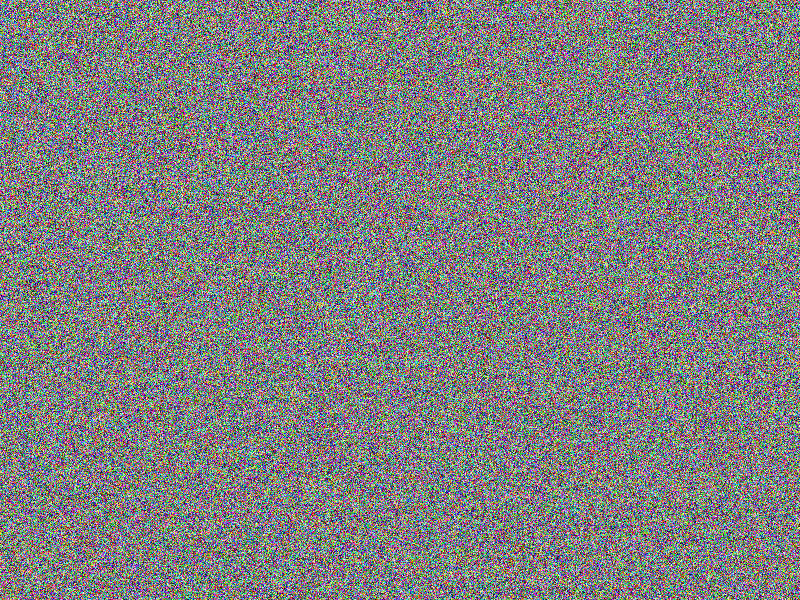 |
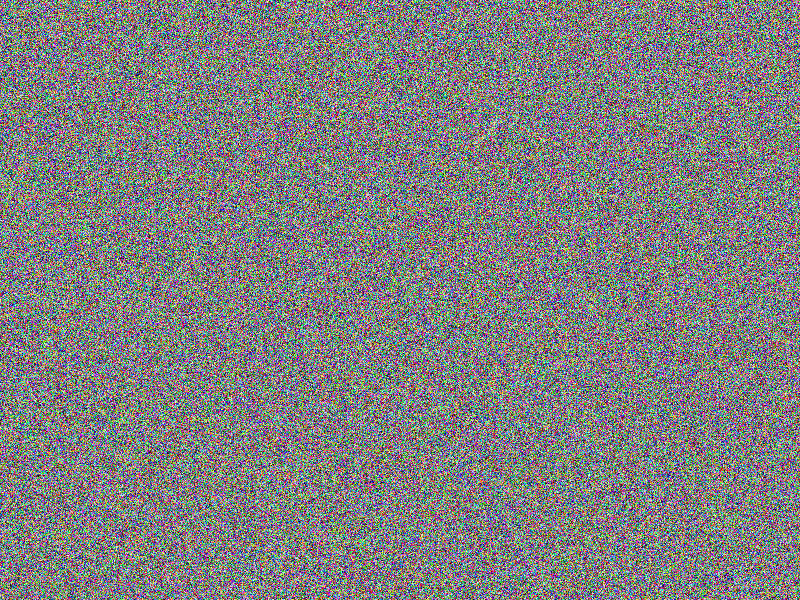 |
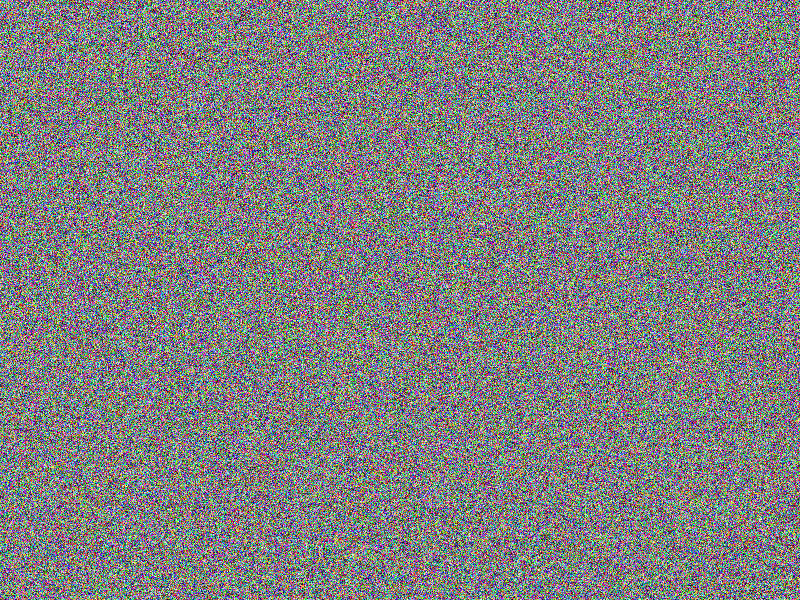 |
Taking a look at image A (raw) data’s metrics with no encryption
applied we get the following values:
- Image file: A (blank image)
- Image width: 800px
- Image height: 600px
- Entropy bits/byte (8 = best): 0
- Arithmetic mean (127.5 = random): 255
- Serial correlation (none = 0.0): -100000
- Max compression (0% = none) = 100%
As the image is a blank (white) image, its raw data consists of an accordingly
large number of bytes with values 255 (0xFF) as a white pixel is represented
by a sequence of bytes with (again) a value of 255 (0xFF). Hence we get an
arithmetic mean of 255 (0xFF).
For a good cryptographic algorithm I would expect the entropy (bits per byte)
to be very near to 8, the arithmetic mean to be very near to 127.5,
the serial correlation to be very near to 0.0 and the max compression
to be very near to 0%.
Observations
The below “Samples” section illustrates the various algorithms’ variants
by comparing two very similar encrypted images A, B
and C with each other: The bottom right images each are
the result of a COMPARE operation
between the according (encrypted) image directly to the left and the according
(encrypted) image directly above that resulting image: Same areas between both
images are colored gray ■ in the resulting image,
differing areas are colored red ■, so that the
difference between two images may give a hint on the content of the images (a fully
red area as a result of comparison would be aspirable).
AES
At a first sight, AES-256 (ECB) encryption still provides a quite
good impression on what has been encrypted, even AES-256 (ECB-SALTED)
salting does not ease the situation. This is a known “feature” of of the
electronic codebook
(ECB) mode used here. Furthermore, the comparison of the AES-256 (ECB)
encrypted images allows conclusions to be drawn about the original images’ content
(see the according bottom right images). At least salting with AES-256 (ECB-SALTED)
makes comparing two very similar encrypted images challenging (notice the according
bottom right image being fully red, indicating no equal areas). Having a glance
at the encrypted images we are better off with AES-256 (CBC), providing
no immediate hint on the content. Still, comparing two very similar images encrypted
using AES-256 (CBC) reveal similar areas till the position where
the images actually differ the fist time (notice the according bottom right image’s
gray areas, indicating equal areas). Using AES-256 (CBC-SALTED)
looks perfect in that the comparison reveals no equal areas (notice the according
bottom right image being fully red, indicating no equal areas) and the encrypted
images look fully random.
CHAOS
As of the CHAOS comparisons we can see the evolution of the CHAOS
command: Vanilla plain CHAOS (NONE) encryption does not reveal immediate
correlation to the content of the original images (there seems already to be a quite
good randomness), although the comparison of the CHAOS (NONE) encrypted
images gives a first impression of the original images’ content (see the according
bottom right images). To soothe this situation, CHAOS (XOR), CHAOS (PREFIX32)
as well as CHAOS (MUTATE) flavors adding some obfuscation were
introduced without a convincing result. At least the combination of all three CHAOS (MUTATE-XOR-PREFIX32)
variants seems to do the trick, any other combination “did not work out”. To not
rely on this combination of obfuscations, as this could have been pure coincidence
(regarding the chosen images), a salting CHAOS (SALTED) flavor
has been implemented. This reliably prevents easily getting an idea of the content
by simply comparing the encrypted images. For scaling purposes, the CHAOS (CERT)
addition has been added, providing means to apply an arbitrary number of encryption
passes using a certificate of detailed instructions for each pass: Hence multiple
passes with a mixture of obfuscation methods can be applied, including XOR, PREFIX,
MUTATE or SLATED obfuscations, alongside individual encryption keys, elongating
the resulting “key” and hardening against brute force attacks.
Critical reflection
In their publication on Chaos-Based Cryptography: End of the Road?, Iercan, D., Dranga, O., Dragan, F. and Banias, O identify a weakness of chaos-based encryption being the “dynamic degradation of digital chaotic systems”:
“… Chaos-based cryptography emerged in the early 1990s as an innovative application of nonlinear dynamics in the chaotic regime. Even if in theory chaotic dynamics was thought to evolve into a new revolution in cryptography, in real-life an efficient and reliable chaos-based cryptosystem didn’t emerge. The main but not the only reason is the dynamic degradation of digital chaotic systems, a subject that became very popular in the last few years. This paper presents a new theoretical background related to this issue that proves the inefficiency of chaos-based encryption algorithms. Even more, in one of the two relevant case studies presented, another myth is demolished: the analog encryption base on synchronized chaos …” Chaos-Based Cryptography: End of the Road?
(I cannot tell whether this applies to Chaos-based encryption using a Poincaré successor ordinal function as described in this article, or not)
Samples
The below samples illustrate the various algorithms’ variants by comparing two
very similar encrypted images A, B
and C with each other: The bottom right images each are
the result of a COMPARE operation
between the according (encrypted) image directly to the left and the according (encrypted)
image directly above that resulting image: Same areas between both images are colored
gray ■ in the resulting image, differing areas
are colored red ■, so that the difference between
two images may give a hint on the content of the images (a fully red area as a result
of comparison would be aspirable).
AES
AES-256 (ECB) encryption
The encryption still provides quite good impression on what has been encrypted.
This is a known “feature” of of the electronic codebook
(ECB) mode used here. Furthermore, the comparison of the encrypted images allows
conclusions to be drawn about the original images’ content (see the according bottom
right images).
Facts
- Algorithm: AES-256-ECB
- Key size: 256 bits (32 Bytes)
- Image file: A (blank image)
- Image width: 800px
- Image height: 600px
- Algorithm prefix (bytes): 16
- Entropy bits/byte (8 = best): 4.000186
- Arithmetic mean (127.5 = random): 102.062991
- Serial correlation (none = 0.0): -0.248134
- Max compression (0% = none): 49%
A + B
| |
Original |
Encrypted |
B |
| Original |
|
|
 |
| Encrypted |
|
enc(A) ≏ enc(B) ~ (A,B) |
 |
| A |
 |
 |
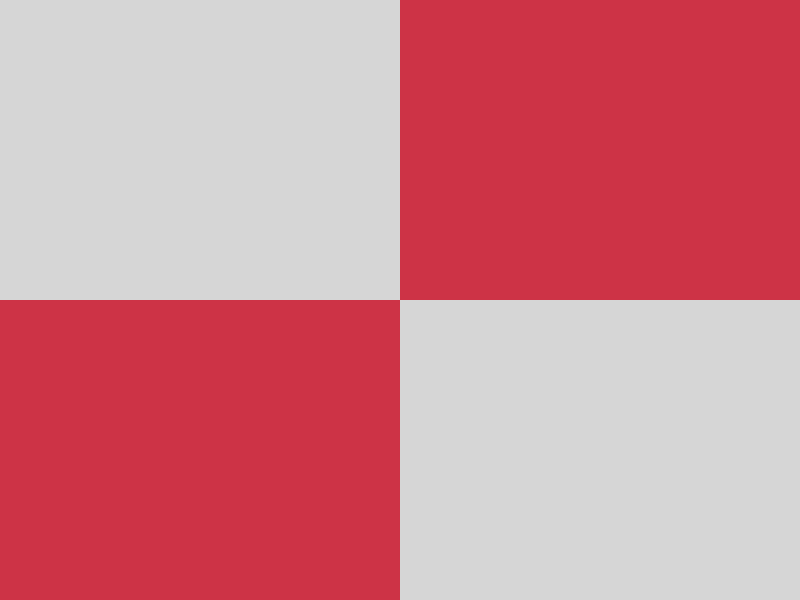 |
B + C
| |
Original |
Encrypted |
C |
| Original |
|
|
 |
| Encrypted |
|
enc(B) ≏ enc(C) ~ (B,C) |
 |
| B |
 |
 |
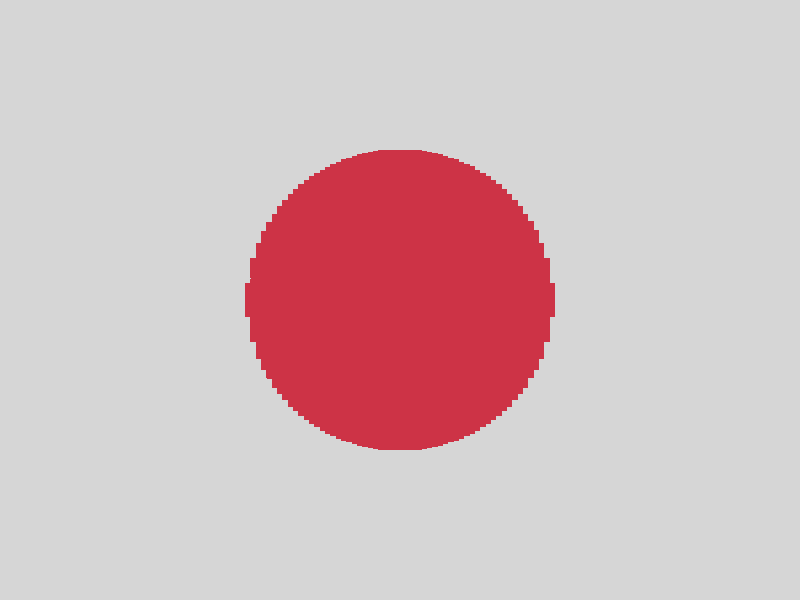 |
A + C
| |
Original |
Encrypted |
C |
| Original |
|
|
 |
| Encrypted |
|
enc(A) ≏ enc(C) ~ (A,C) |
 |
| A |
 |
 |
 |
AES-256 (ECB-SALTED) encryption
Encryption still provides a quite good impression on what has been encrypted, although
salting has been applied. This is a known “feature” of of the
electronic codebook
(ECB) mode used here. At least salting makes comparing two very
similar encrypted images challenging (notice the according bottom right image being
fully red, indicating no equal areas).
Facts
- Algorithm: AES-256-ECB-SALTED
- Key size: 256 bits (32 Bytes)
- Image file: A (blank image)
- Image width: 800px
- Image height: 600px
- Algorithm prefix (bytes): 16
- Entropy bits/byte (8 = best): 4.000373
- Arithmetic mean (127.5 = random): 90.938478
- Serial correlation (none = 0.0): -0.065746
- Max compression (0% = none): 49%
A + B
| |
Original |
Encrypted |
B |
| Original |
|
|
 |
| Encrypted |
|
enc(A) ≏ enc(B) ~ (A,B) |
 |
| A |
 |
 |
 |
B + C
| |
Original |
Encrypted |
C |
| Original |
|
|
 |
| Encrypted |
|
enc(B) ≏ enc(C) ~ (B,C) |
 |
| B |
 |
 |
 |
A + C
| |
Original |
Encrypted |
C |
| Original |
|
|
 |
| Encrypted |
|
enc(A) ≏ enc(C) ~ (A,C) |
 |
| A |
 |
 |
 |
AES-256 (CBC) encryption
Encryption does not provide an immediate hint on the content. Still, comparing two
very similar images reveal similar areas till the position where the images actually
differ the fist time (notice the according bottom right image’s gray areas, indicating
equal areas).
Facts
- Algorithm: AES-256-CBC
- Key size: 256 bits (32 Bytes)
- Image file: A (blank image)
- Image width: 800px
- Image height: 600px
- Algorithm prefix (bytes): 16
- Entropy bits/byte (8 = best): 7.999896
- Arithmetic mean (127.5 = random): 127.455223
- Serial correlation (none = 0.0): -0.000401
- Max compression (0% = none): 0%
A + B
| |
Original |
Encrypted |
B |
| Original |
|
|
 |
| Encrypted |
|
enc(A) ≏ enc(B) ~ (A,B) |
 |
| A |
 |
 |
 |
B + C
| |
Original |
Encrypted |
C |
| Original |
|
|
 |
| Encrypted |
|
enc(B) ≏ enc(C) ~ (B,C) |
 |
| B |
 |
 |
 |
A + C
| |
Original |
Encrypted |
C |
| Original |
|
|
 |
| Encrypted |
|
enc(A) ≏ enc(C) ~ (A,C) |
 |
| A |
 |
 |
 |
AES-256 (CBC-SALTED) encryption
Salted encryption looks perfect in that the comparison reveals no equal
areas (notice the according bottom right image being fully red, indicating no equal
areas) and the encrypted images look fully random.
Facts
- Algorithm: AES-256-CBC-SALTED
- Key size: 256 bits (32 Bytes)
- Image file: A (blank image)
- Image width: 800px
- Image height: 600px
- Algorithm prefix (bytes): 16
- Entropy bits/byte (8 = best): 7.999867
- Arithmetic mean (127.5 = random): 127.536467
- Serial correlation (none = 0.0): -0.000888
- Max compression (0% = none): 0%
A + B
| |
Original |
Encrypted |
B |
| Original |
|
|
 |
| Encrypted |
|
enc(A) ≏ enc(B) ~ (A,B) |
 |
| A |
 |
 |
 |
B + C
| |
Original |
Encrypted |
C |
| Original |
|
|
 |
| Encrypted |
|
enc(B) ≏ enc(C) ~ (B,C) |
 |
| B |
 |
 |
 |
A + C
| |
Original |
Encrypted |
C |
| Original |
|
|
 |
| Encrypted |
|
enc(A) ≏ enc(C) ~ (A,C) |
 |
| A |
 |
 |
 |
CHAOS
CHAOS (NONE) encryption
Vanilla plain encryption does not reveal immediate correlation to the content of
the original images (there seems already to be a quite good randomness), although
the comparison of the encrypted images gives a first impression of the original
images’ content (see the according bottom right images).
Facts
- Algorithm: CHAOS-NONE
- Image file: A (blank image)
- Image width: 800px
- Image height: 600px
- Algorithm prefix (bytes): 0
- Entropy bits/byte (8 = best): 7.999869
- Arithmetic mean (127.5 = random): 127.420840
- Serial correlation (none = 0.0): -0.000196
- Max compression (0% = none): 0%
A + B
| |
Original |
Encrypted |
B |
| Original |
|
|
 |
| Encrypted |
|
enc(A) ≏ enc(B) ~ (A,B) |
 |
| A |
 |
 |
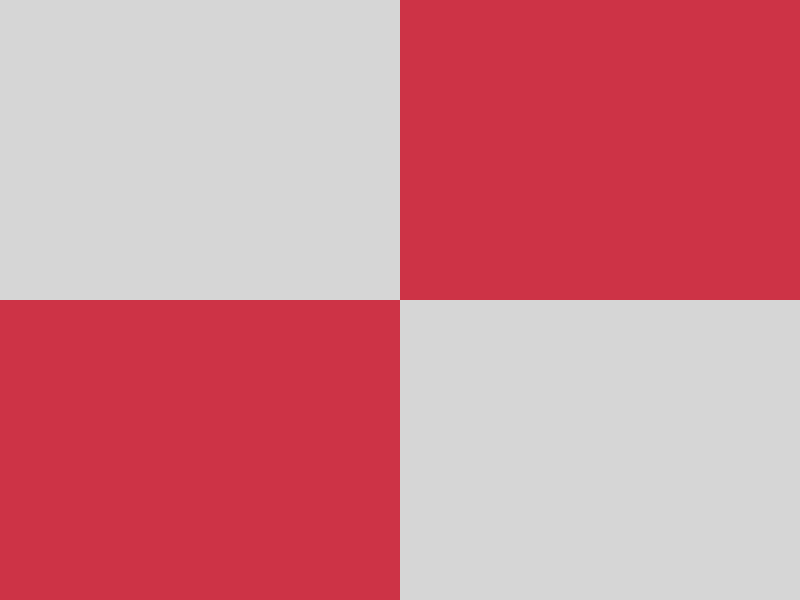 |
B + C
| |
Original |
Encrypted |
C |
| Original |
|
|
 |
| Encrypted |
|
enc(B) ≏ enc(C) ~ (B,C) |
 |
| B |
 |
 |
 |
A + C
| |
Original |
Encrypted |
C |
| Original |
|
|
 |
| Encrypted |
|
enc(A) ≏ enc(C) ~ (A,C) |
 |
| A |
 |
 |
 |
CHAOS (XOR) encryption
Adding some XOR obfuscation during encryption does not lead to a convincing result.
Comparing two very similar images not only reveal similar areas till the position
where the images actually differ the fist time (notice the according bottom right
image’s gray areas, indicating equal areas).
Facts
- Algorithm: CHAOS-XOR
- Image file: A (blank image)
- Image width: 800px
- Image height: 600px
- Algorithm prefix (bytes): 0
- Entropy bits/byte (8 = best): 7.999878
- Arithmetic mean (127.5 = random): 127.535873
- Serial correlation (none = 0.0): 0.002190
- Max compression (0% = none): 0%
A + B
| |
Original |
Encrypted |
B |
| Original |
|
|
 |
| Encrypted |
|
enc(A) ≏ enc(B) ~ (A,B) |
 |
| A |
 |
 |
 |
B + C
| |
Original |
Encrypted |
C |
| Original |
|
|
 |
| Encrypted |
|
enc(B) ≏ enc(C) ~ (B,C) |
 |
| B |
 |
 |
 |
A + C
| |
Original |
Encrypted |
C |
| Original |
|
|
 |
| Encrypted |
|
enc(A) ≏ enc(C) ~ (A,C) |
 |
| A |
 |
 |
 |
CHAOS (PREFIX32) encryption
Adding some PREFIX obfuscation during encryption does not lead to any improvement
at all. The comparison of the encrypted images gives the same impression of the
original images’ content as if no obfuscation at all would have been applied (see
the according bottom right images). Actually, PREFIX obfuscation is not an obfuscation
mode by itself, it only shows an effect when hardening the XOR and/or the MUTATE
obfuscation!
Facts
- Algorithm: CHAOS-PREFIX32
- Image file: A (blank image)
- Image width: 800px
- Image height: 600px
- Algorithm prefix (bytes): 32
- Entropy bits/byte (8 = best): 7.999855
- Arithmetic mean (127.5 = random): 127.461611
- Serial correlation (none = 0.0): -0.000197
- Max compression (0% = none): 0%
A + B
| |
Original |
Encrypted |
B |
| Original |
|
|
 |
| Encrypted |
|
enc(A) ≏ enc(B) ~ (A,B) |
 |
| A |
 |
 |
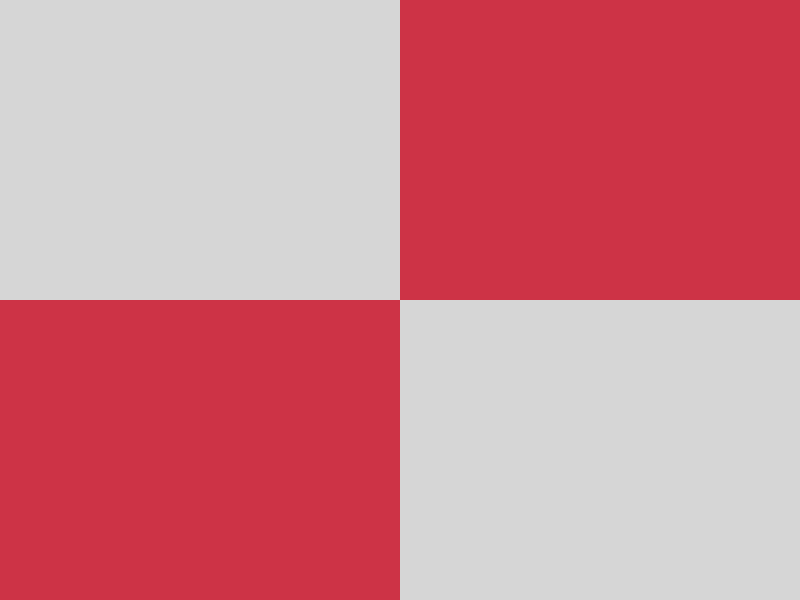 |
B + C
| |
Original |
Encrypted |
C |
| Original |
|
|
 |
| Encrypted |
|
enc(B) ≏ enc(C) ~ (B,C) |
 |
| B |
 |
 |
 |
A + C
| |
Original |
Encrypted |
C |
| Original |
|
|
 |
| Encrypted |
|
enc(A) ≏ enc(C) ~ (A,C) |
 |
| A |
 |
 |
 |
CHAOS (MUTATE) encryption
Adding some MUTATE obfuscation during encryption does not lead to a convincing
result. Comparing two very similar images not only reveal similar areas till the position
where the images actually differ the fist time (notice the according bottom right
image’s gray areas, indicating equal areas).
Facts
- Algorithm: CHAOS-MUTATE
- Image file: A (blank image)
- Image width: 800px
- Image height: 600px
- Algorithm prefix (bytes): 0
- Entropy bits/byte (8 = best): 7.999867
- Arithmetic mean (127.5 = random): 127.506294
- Serial correlation (none = 0.0): 0.000554
- Max compression (0% = none): 0%
A + B
| |
Original |
Encrypted |
B |
| Original |
|
|
 |
| Encrypted |
|
enc(A) ≏ enc(B) ~ (A,B) |
 |
| A |
 |
 |
 |
B + C
| |
Original |
Encrypted |
C |
| Original |
|
|
 |
| Encrypted |
|
enc(B) ≏ enc(C) ~ (B,C) |
 |
| B |
 |
 |
 |
A + C
| |
Original |
Encrypted |
C |
| Original |
|
|
 |
| Encrypted |
|
enc(A) ≏ enc(C) ~ (A,C) |
 |
| A |
 |
 |
 |
CHAOS (MUTATE-XOR) encryption
Combining MUTATE obfuscation with XOR mutation during encryption does not
lead to a convincing result. Comparing two very similar images reveal similar areas
till the position where the images actually differ the fist time (notice the according
bottom right image’s gray areas, indicating equal areas).
Facts
- Algorithm: CHAOS-MUTATE-XOR
- Image file: A (blank image)
- Image width: 800px
- Image height: 600px
- Algorithm prefix (bytes): 0
- Entropy bits/byte (8 = best): 7.999898
- Arithmetic mean (127.5 = random): 127.500697
- Serial correlation (none = 0.0): 0.000449
- Max compression (0% = none): 0%
A + B
| |
Original |
Encrypted |
B |
| Original |
|
|
 |
| Encrypted |
|
enc(A) ≏ enc(B) ~ (A,B) |
 |
| A |
 |
 |
 |
B + C
| |
Original |
Encrypted |
C |
| Original |
|
|
 |
| Encrypted |
|
enc(B) ≏ enc(C) ~ (B,C) |
 |
| B |
 |
 |
 |
A + C
| |
Original |
Encrypted |
C |
| Original |
|
|
 |
| Encrypted |
|
enc(A) ≏ enc(C) ~ (A,C) |
 |
| A |
 |
 |
 |
CHAOS (MUTATE-PREFIX32) encryption
Combining MUTATE obfuscation with PREFIX mutation during encryption does not
lead to a convincing result. Comparing two very similar images still reveal few
similar areas (notice the according bottom right image’s gray areas, indicating
equal areas).
Facts
- Algorithm: CHAOS-MUTATE-PREFIX32
- Image file: A (blank image)
- Image width: 800px
- Image height: 600px
- Algorithm prefix (bytes): 32
- Entropy bits/byte (8 = best): 7.999874
- Arithmetic mean (127.5 = random): 127.545626
- Serial correlation (none = 0.0): -0.001285
- Max compression (0% = none): 0%
A + B
| |
Original |
Encrypted |
B |
| Original |
|
|
 |
| Encrypted |
|
enc(A) ≏ enc(B) ~ (A,B) |
 |
| A |
 |
 |
 |
B + C
| |
Original |
Encrypted |
C |
| Original |
|
|
 |
| Encrypted |
|
enc(B) ≏ enc(C) ~ (B,C) |
 |
| B |
 |
 |
 |
A + C
| |
Original |
Encrypted |
C |
| Original |
|
|
 |
| Encrypted |
|
enc(A) ≏ enc(C) ~ (A,C) |
 |
| A |
 |
 |
 |
CHAOS (MUTATE-XOR-PREFIX32) encryption
The combination of all three MUTATE + XOR + PREFIX32 obfuscation variants
makes comparing two very similar encrypted images hard (notice the according bottom
right image being fully red, indicating no equal areas).
Facts
- Algorithm: CHAOS-MUTATE-XOR-PREFIX32
- Image file: A (blank image)
- Image width: 800px
- Image height: 600px
- Algorithm prefix (bytes): 32
- Entropy bits/byte (8 = best): 7.999880
- Arithmetic mean (127.5 = random): 127.527029
- Serial correlation (none = 0.0): 0.000805
- Max compression (0% = none): 0%
A + B
| |
Original |
Encrypted |
B |
| Original |
|
|
 |
| Encrypted |
|
enc(A) ≏ enc(B) ~ (A,B) |
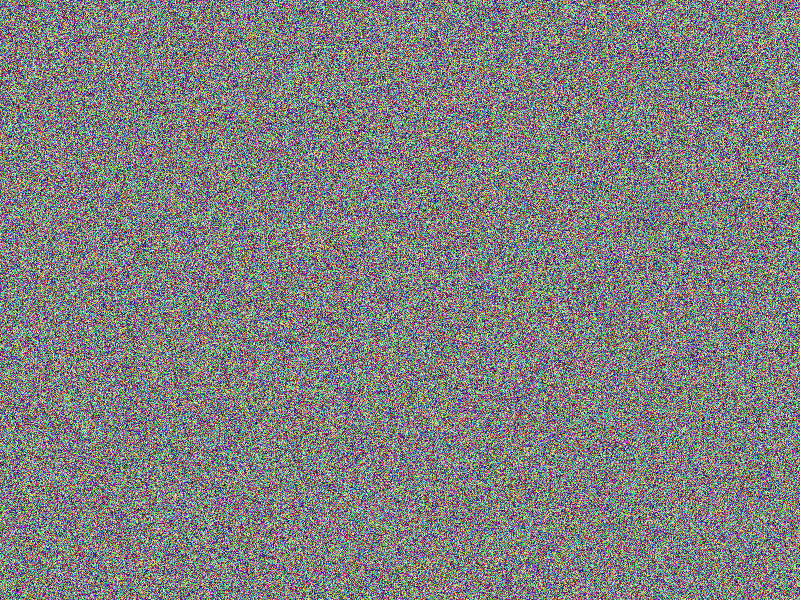 |
| A |
 |
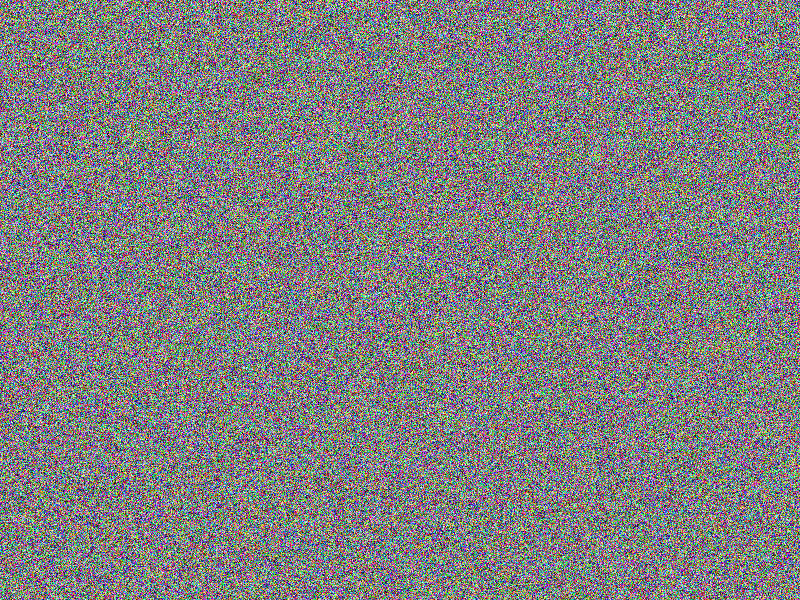 |
 |
B + C
| |
Original |
Encrypted |
C |
| Original |
|
|
 |
| Encrypted |
|
enc(B) ≏ enc(C) ~ (B,C) |
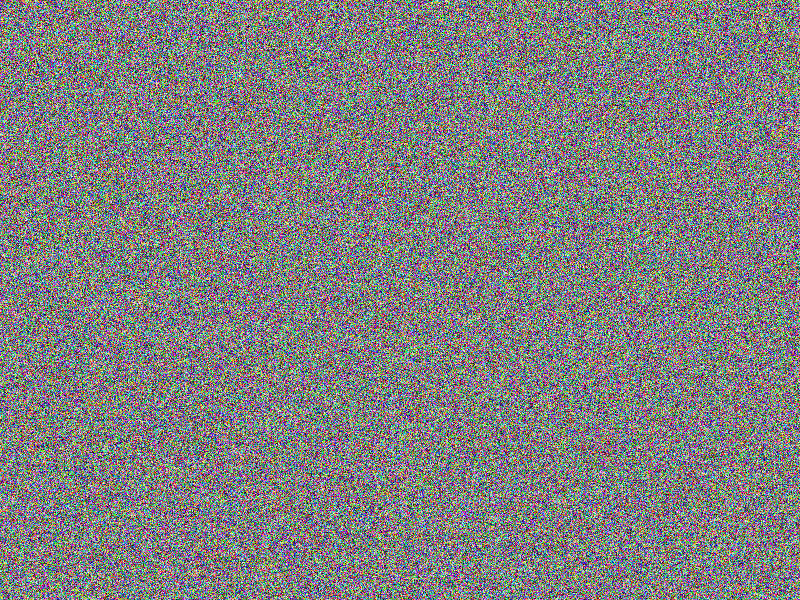 |
| B |
 |
 |
 |
A + C
| |
Original |
Encrypted |
C |
| Original |
|
|
 |
| Encrypted |
|
enc(A) ≏ enc(C) ~ (A,C) |
 |
| A |
 |
 |
 |
CHAOS (SALTED) encryption
Salted encryption looks perfect in that the comparison reveals no equal areas (notice
the according bottom right image being fully red, indicating no equal areas) and
the encrypted images look fully random.
Facts
- Algorithm: CHAOS-SALTED
- Image file: A (blank image)
- Image width: 800px
- Image height: 600px
- Algorithm prefix (bytes): 25
- Entropy bits/byte (8 = best): 7.999869
- Arithmetic mean (127.5 = random): 127.530544
- Serial correlation (none = 0.0): 0.000776
- Max compression (0% = none): 0%
A + B
| |
Original |
Encrypted |
B |
| Original |
|
|
 |
| Encrypted |
|
enc(A) ≏ enc(B) ~ (A,B) |
 |
| A |
 |
 |
 |
B + C
| |
Original |
Encrypted |
C |
| Original |
|
|
 |
| Encrypted |
|
enc(B) ≏ enc(C) ~ (B,C) |
 |
| B |
 |
 |
 |
A + C
| |
Original |
Encrypted |
C |
| Original |
|
|
 |
| Encrypted |
|
enc(A) ≏ enc(C) ~ (A,C) |
 |
| A |
 |
 |
 |
CHAOS (CERT) encryption
For scaling purposes, means are provided to apply an arbitrary number of encryption
passes using a certificate of detailed instructions for each pass: Hence multiple
passes with a mixture of obfuscation methods are applied, including XOR, PREFIX,
MUTATE or SLATED obfuscations, alongside individual encryption keys, elongating
the resulting “key” and hardening against brute force attacks.
Facts
- Algorithm: CHAOS-CERT
- Chain length: 8
- First key: Salted = true, XOR = false, Mutate = false, Prefix = none
- Second key: Salted = false, XOR = false, Mutate = true, Prefix = none
- Other keys: Salted = false, XOR = false, Mutate = false, Prefix = none
- Image file: A (blank image)
- Image width: 800px
- Image height: 600px
- Algorithm prefix (bytes): 25
- Entropy bits/byte (8 = best): 7.999887
- Arithmetic mean (127.5 = random): 127.501808
- Serial correlation (none = 0.0): -0.000777
- Max compression (0% = none): 0%
A + B
| |
Original |
Encrypted |
B |
| Original |
|
|
 |
| Encrypted |
|
enc(A) ≏ enc(B) ~ (A,B) |
 |
| A |
 |
 |
 |
B + C
| |
Original |
Encrypted |
C |
| Original |
|
|
 |
| Encrypted |
|
enc(B) ≏ enc(C) ~ (B,C) |
 |
| B |
 |
 |
 |
A + C
| |
Original |
Encrypted |
C |
| Original |
|
|
 |
| Encrypted |
|
enc(A) ≏ enc(C) ~ (A,C) |
 |
| A |
 |
 |
 |
See also





























































































































































































































































